- Augur Digest
- Posts
- Augur Digest #103
Augur Digest #103
Headlines
- US Treasury Secretary Bessent indicated that a potential trade truce with China is conditional on Beijing delaying its planned restrictions on rare earth mineral exports.
- The Trump administration will set price floors across a range of industries to combat market manipulation by China, Secretary Bessent told CNBC.
- The British chancellor of the exchequer announced that tax hikes and spending cuts are being considered for the upcoming Autumn budget.
- France’s prime minister will reportedly abandon pension reform plans in an attempt to appease political opposition.
- South Korea’s national security office convened to discuss measures for ensuring a stable supply of rare earth elements amid global supply chain concerns.
Global Economics
United States
- The government shutdown has entered its fifteenth day.
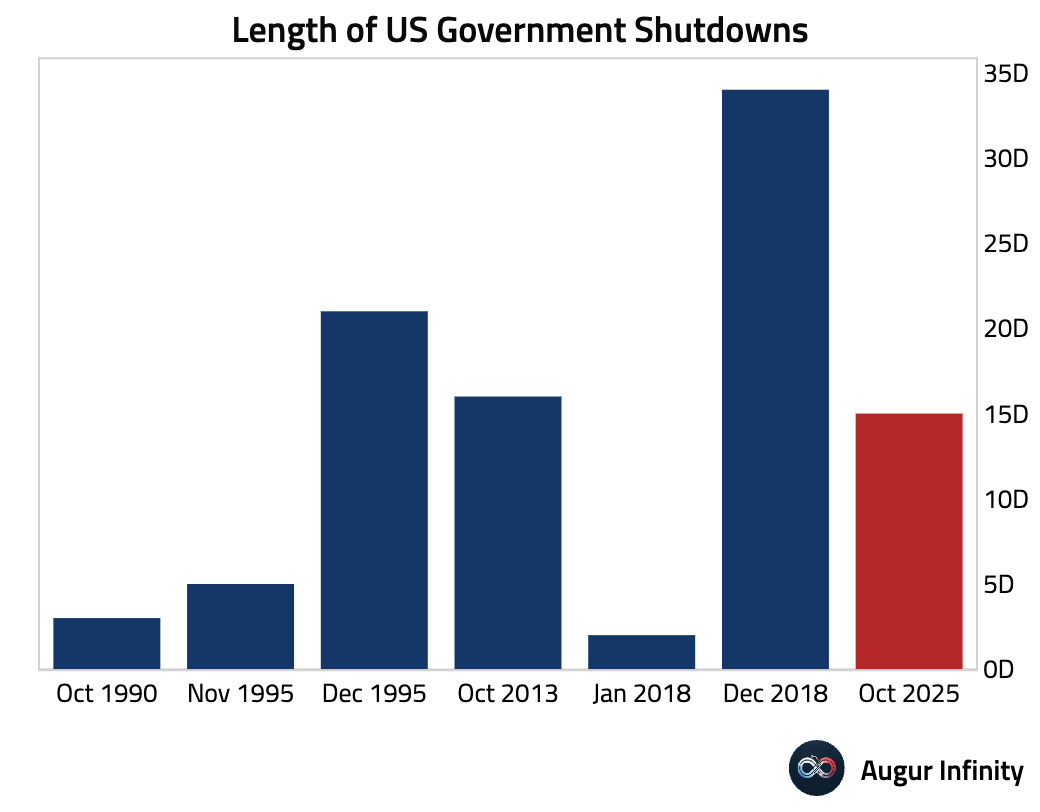
- The New York Fed’s manufacturing index unexpectedly surged back into expansionary territory, crushing the consensus estimate. The six-month outlook more than doubled on optimism for favorable tax policy and AI investment. However, the report also pointed to building price pressures.
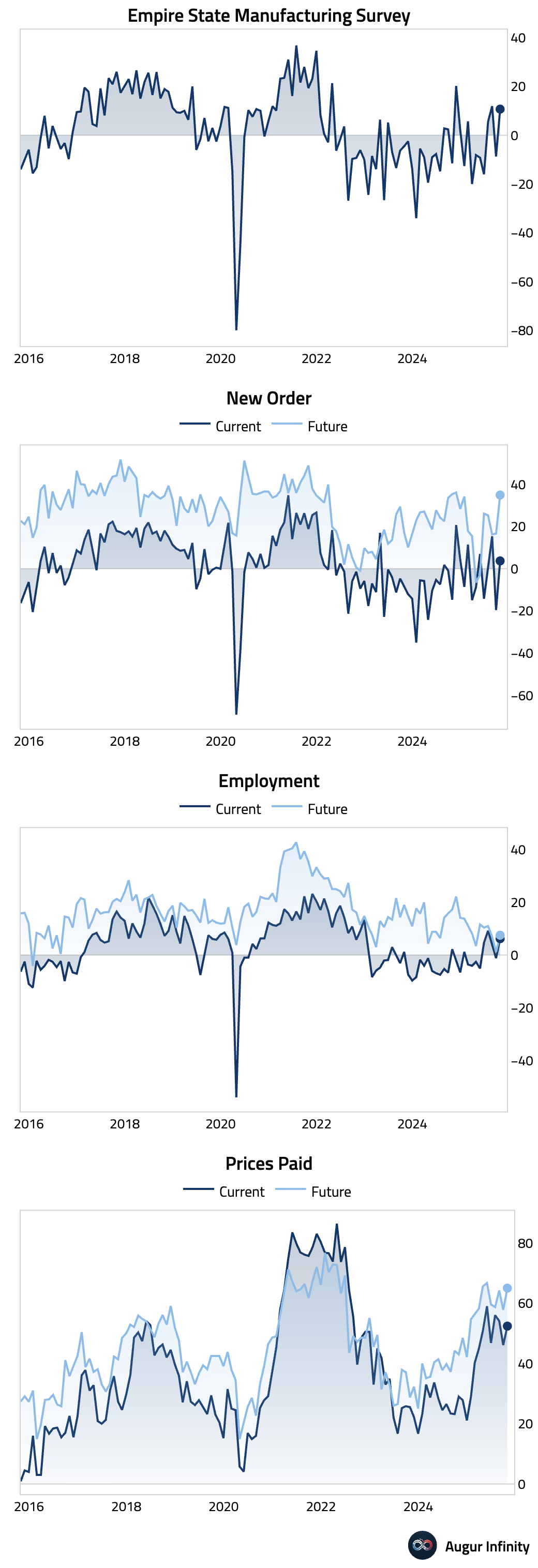
Interactive chart on Augur Infinity
- Timely estimate of US growth remains solid at 2.2%, above potential growth rate.
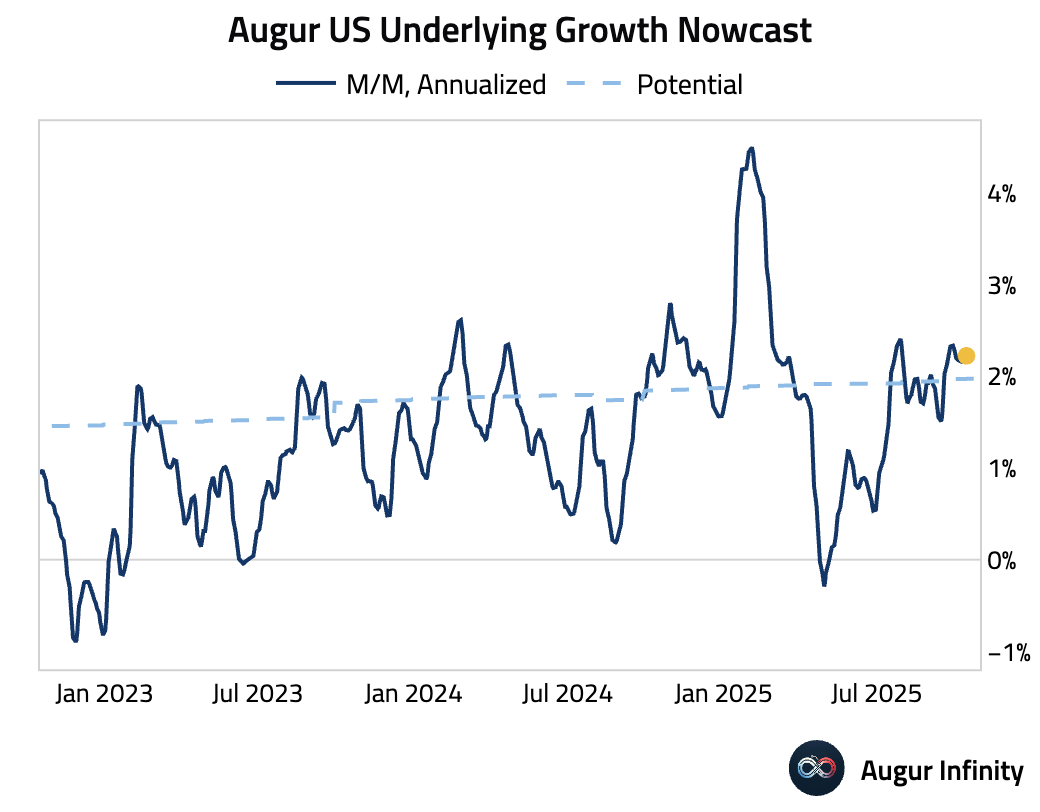
- The Chicago Fed CARTS is projecting retail sales ex-auto for September to rise by 0.5% M/M.
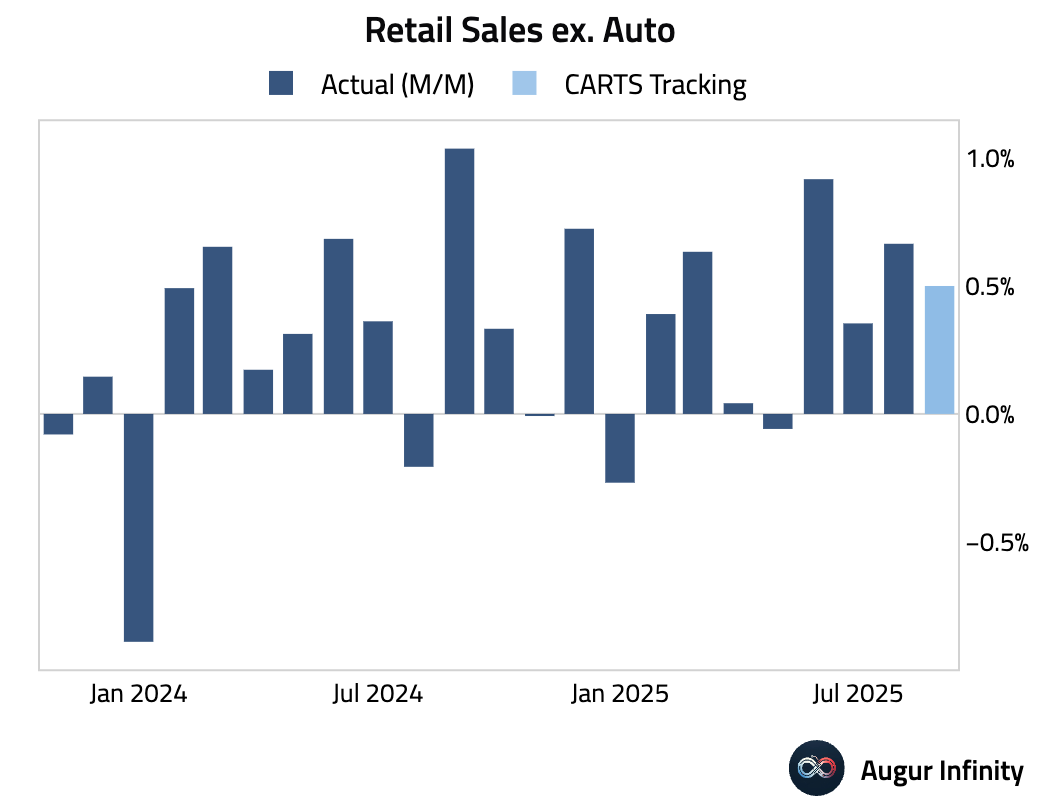
- The Dallas Fed's Daily News Sentiment Index is slumping.
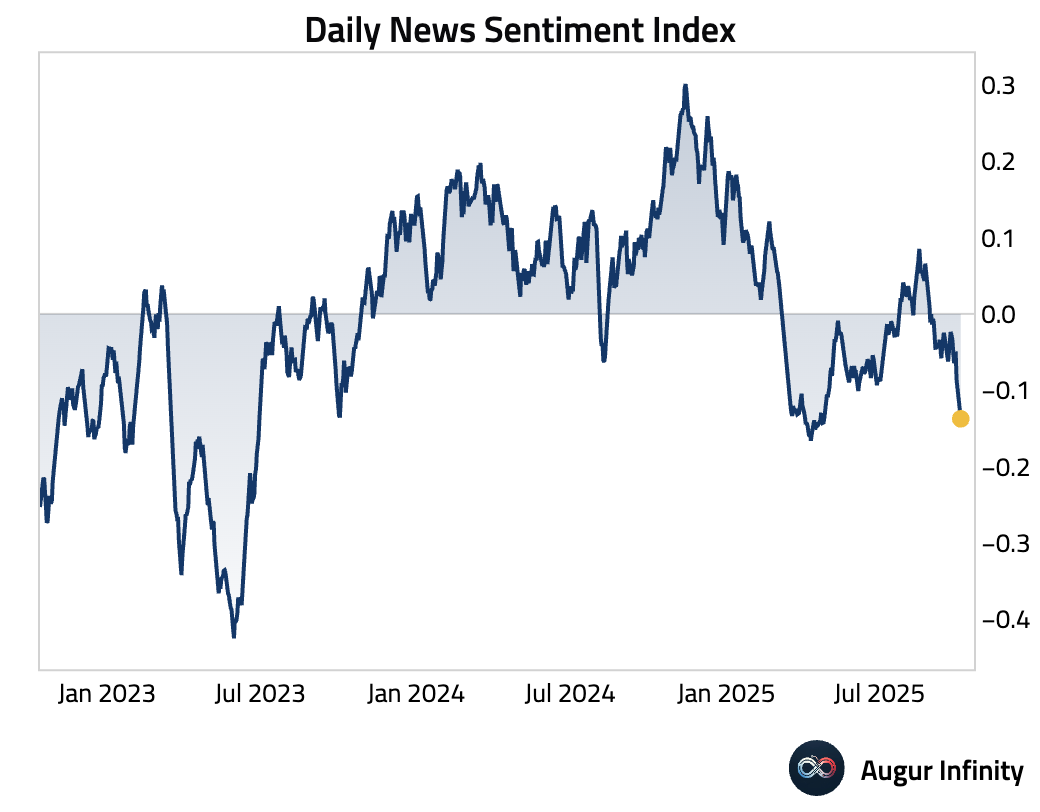
- According to Fed's Beige Book, overall economic activity was little changed and employment levels held stable. Consumer spending edged lower, and several districts reported that input costs increased at a faster pace. Our Beige Book Sentiment Indicator declined slightly.
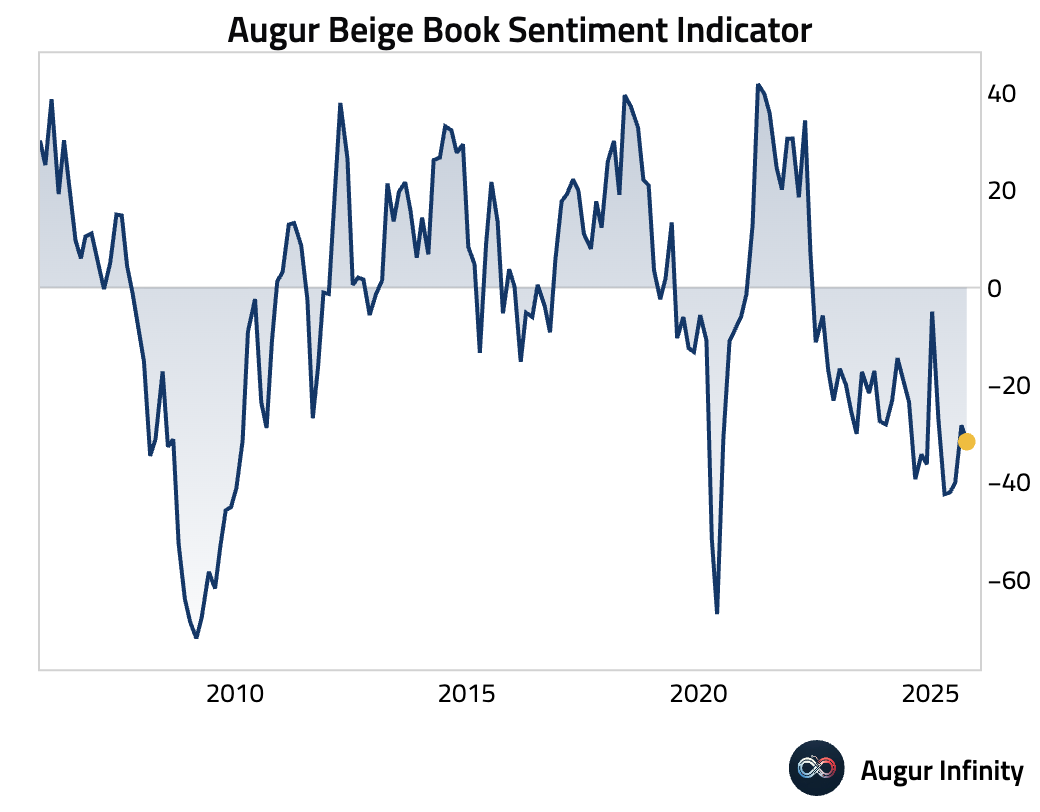
- MBA Mortgage Applications fell week-over-week for the second consecutive week, driven by declines in both purchase and refinance activity. The Purchase Index declined to its lowest level since late August.
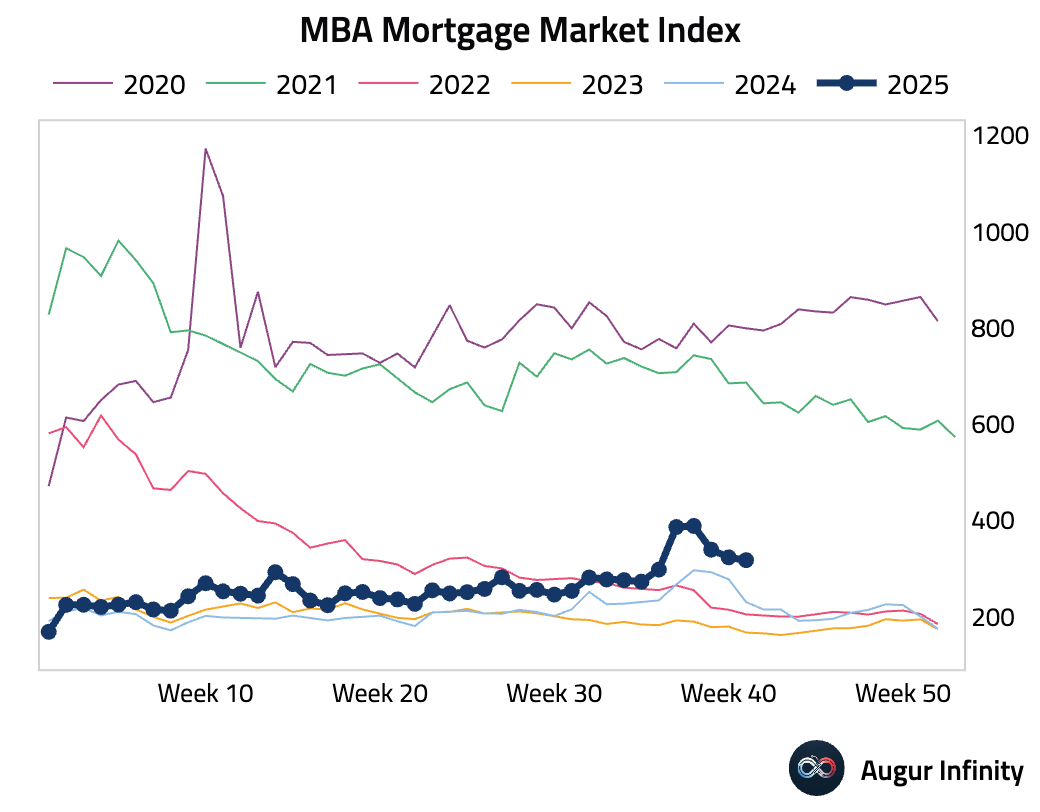
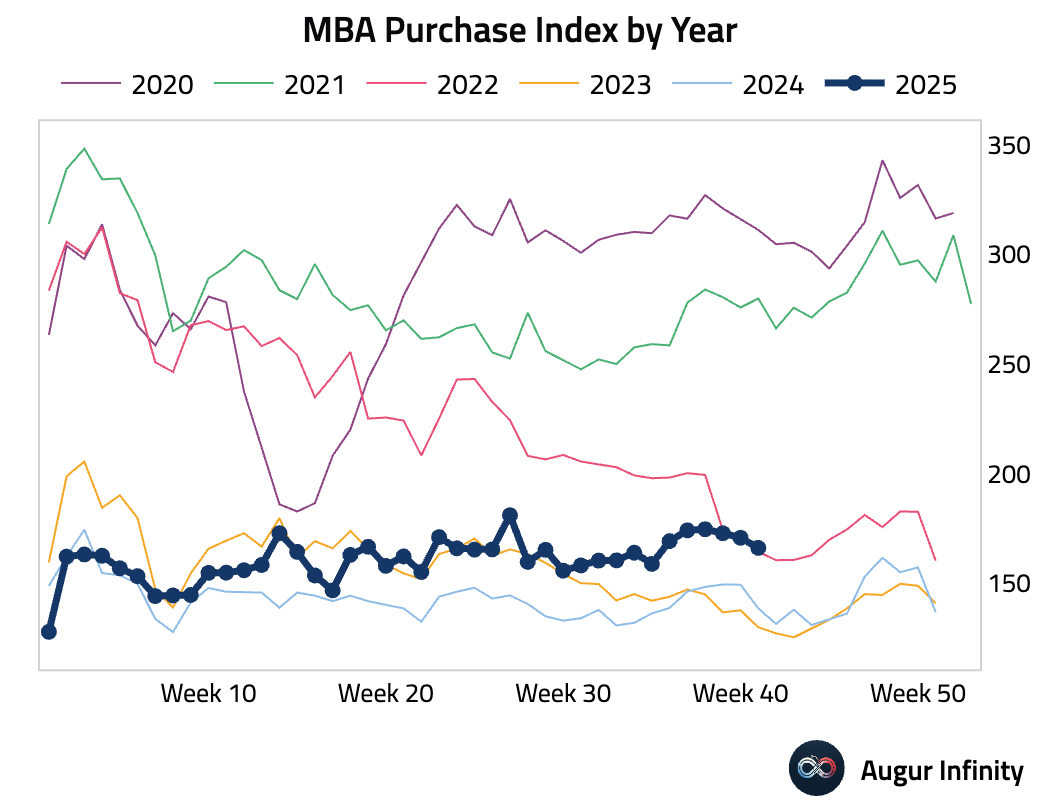
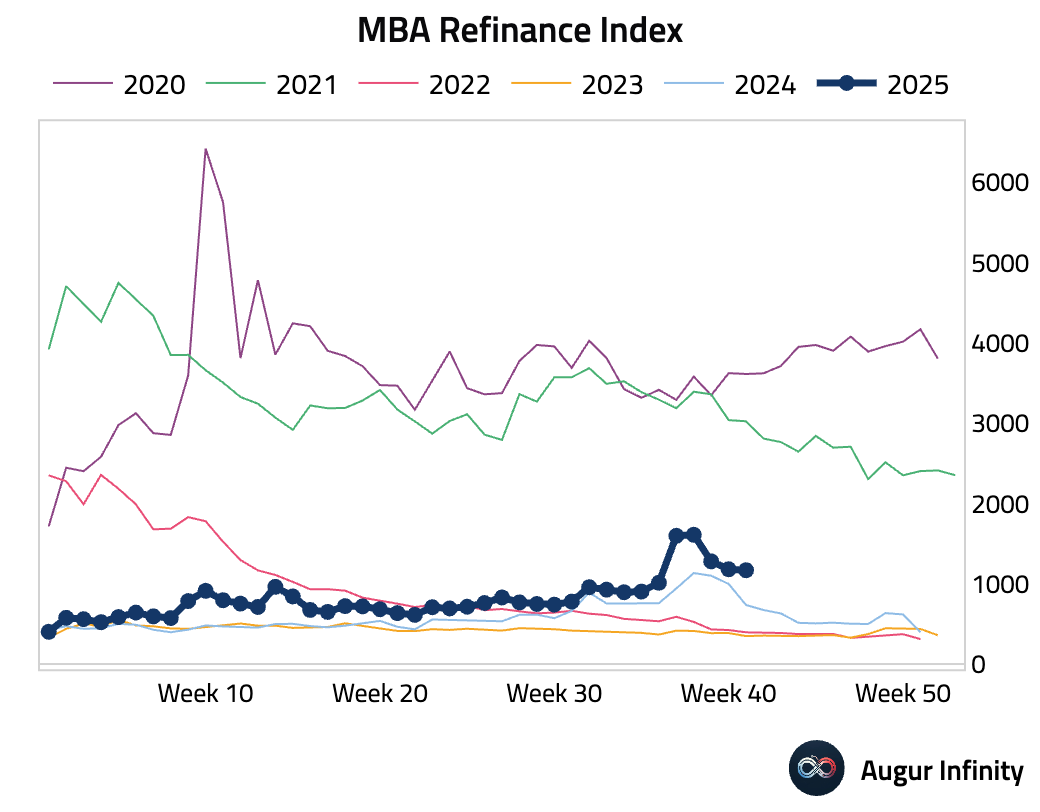
- The average 30-year mortgage rate edged down by one basis point to 6.42%.
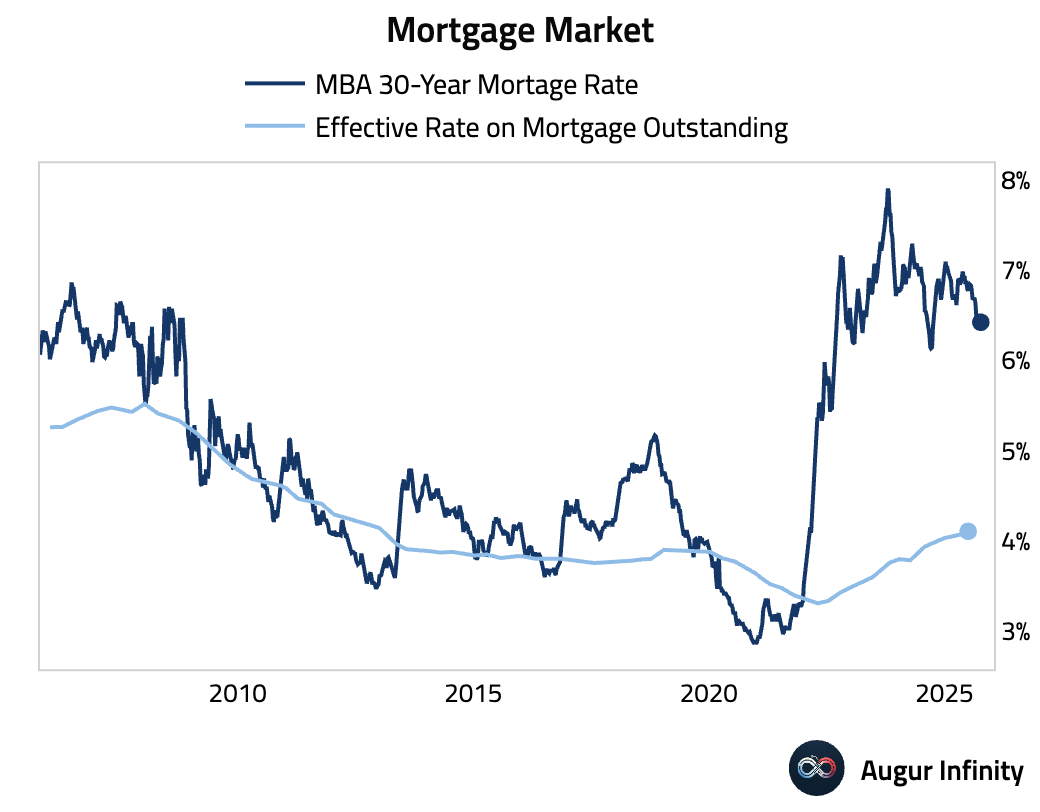
Canada
- Final manufacturing sales contracted in August, though slightly less than anticipated.
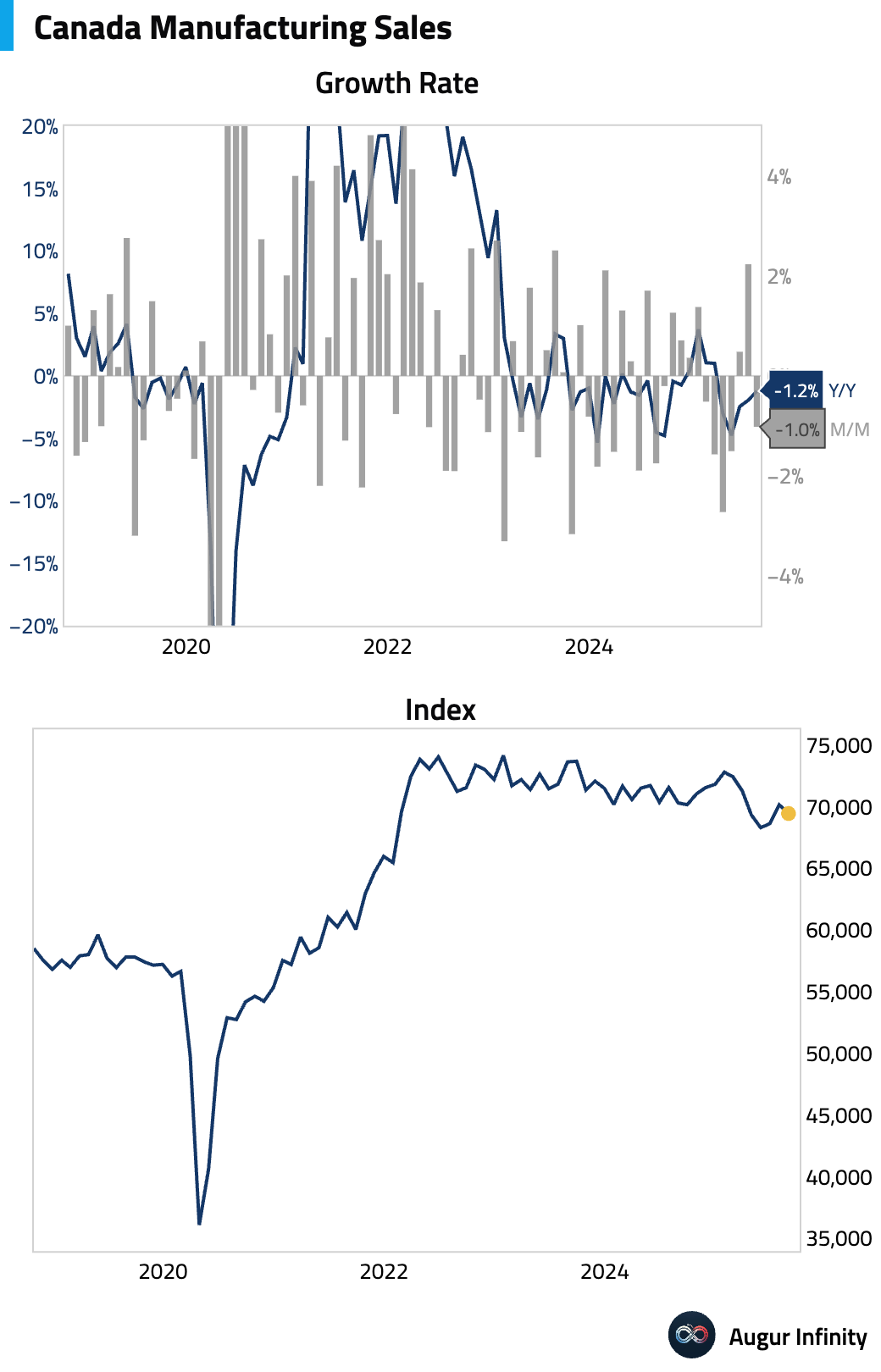
- Wholesale trade also declined in August.
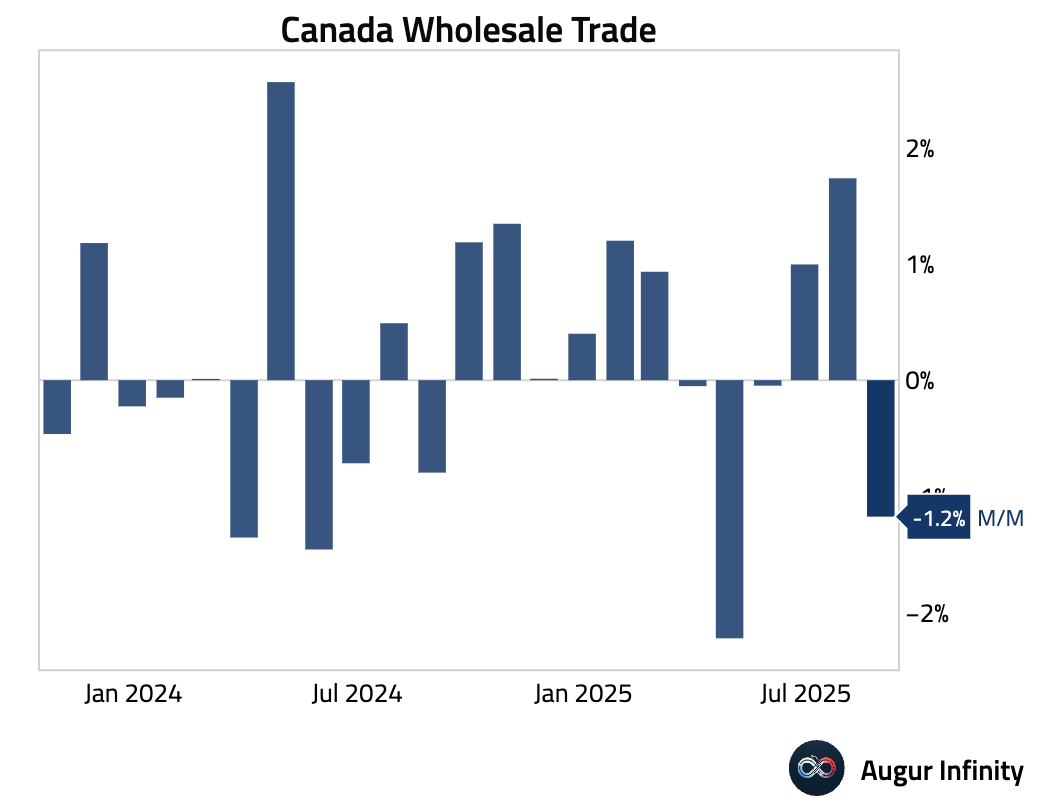
Interactive chart on Augur Infinity
- New motor vehicle sales fell in August after a strong July performance.

Europe
- Eurozone industrial production fell more than expected in August.
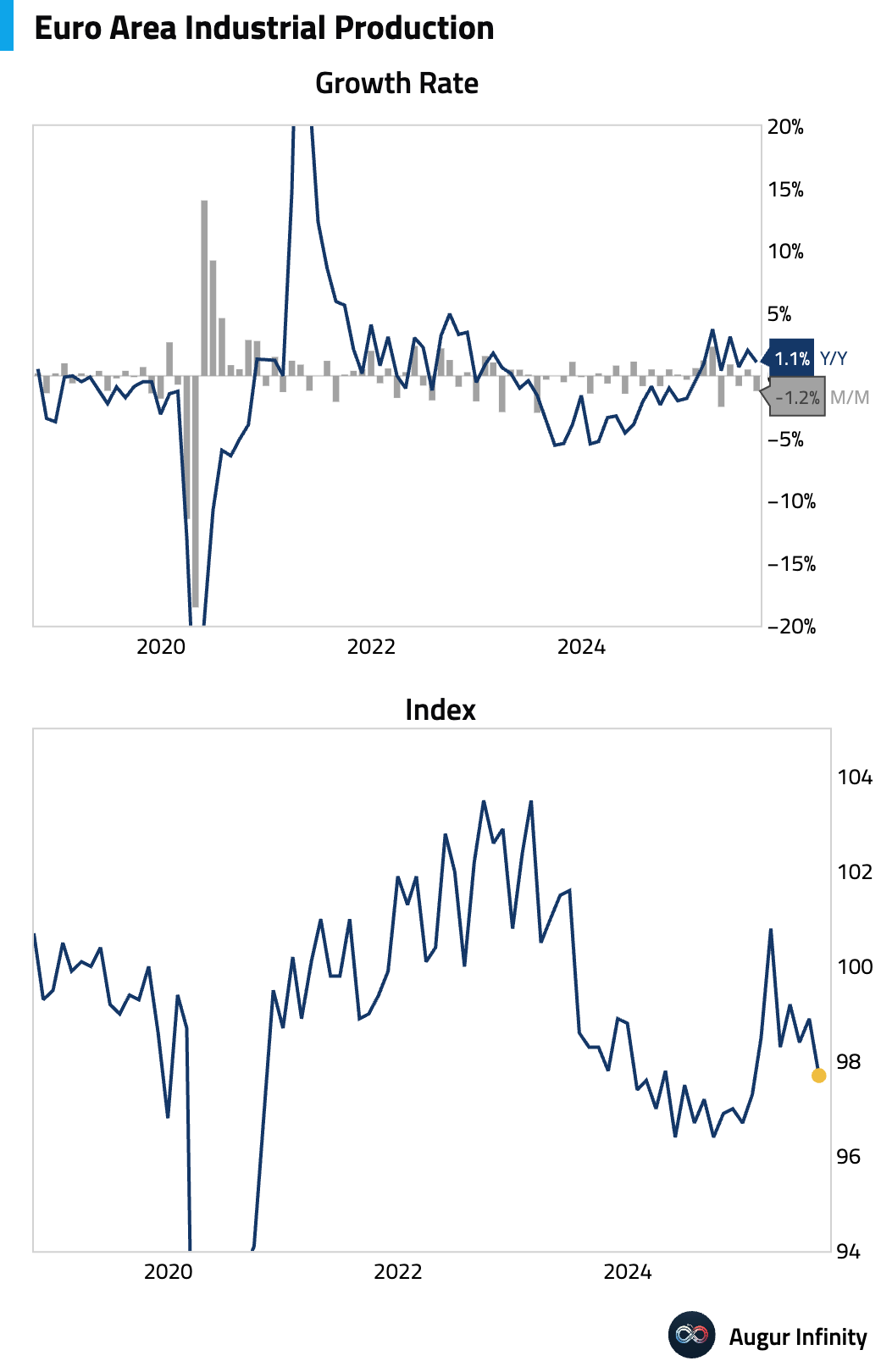
Interactive chart on Augur Infinity
Here's euro area industrial production by country.
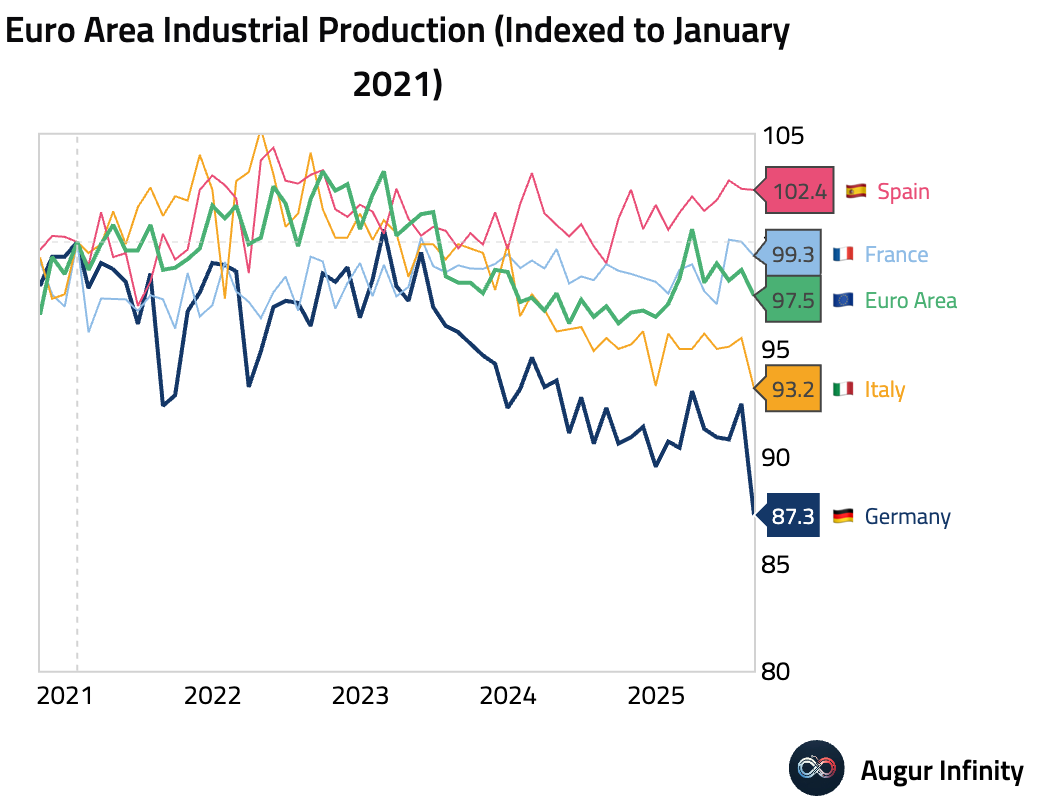
Interactive chart on Augur Infinity
- The final CPI print for France was unchanged from the preliminary estimate.
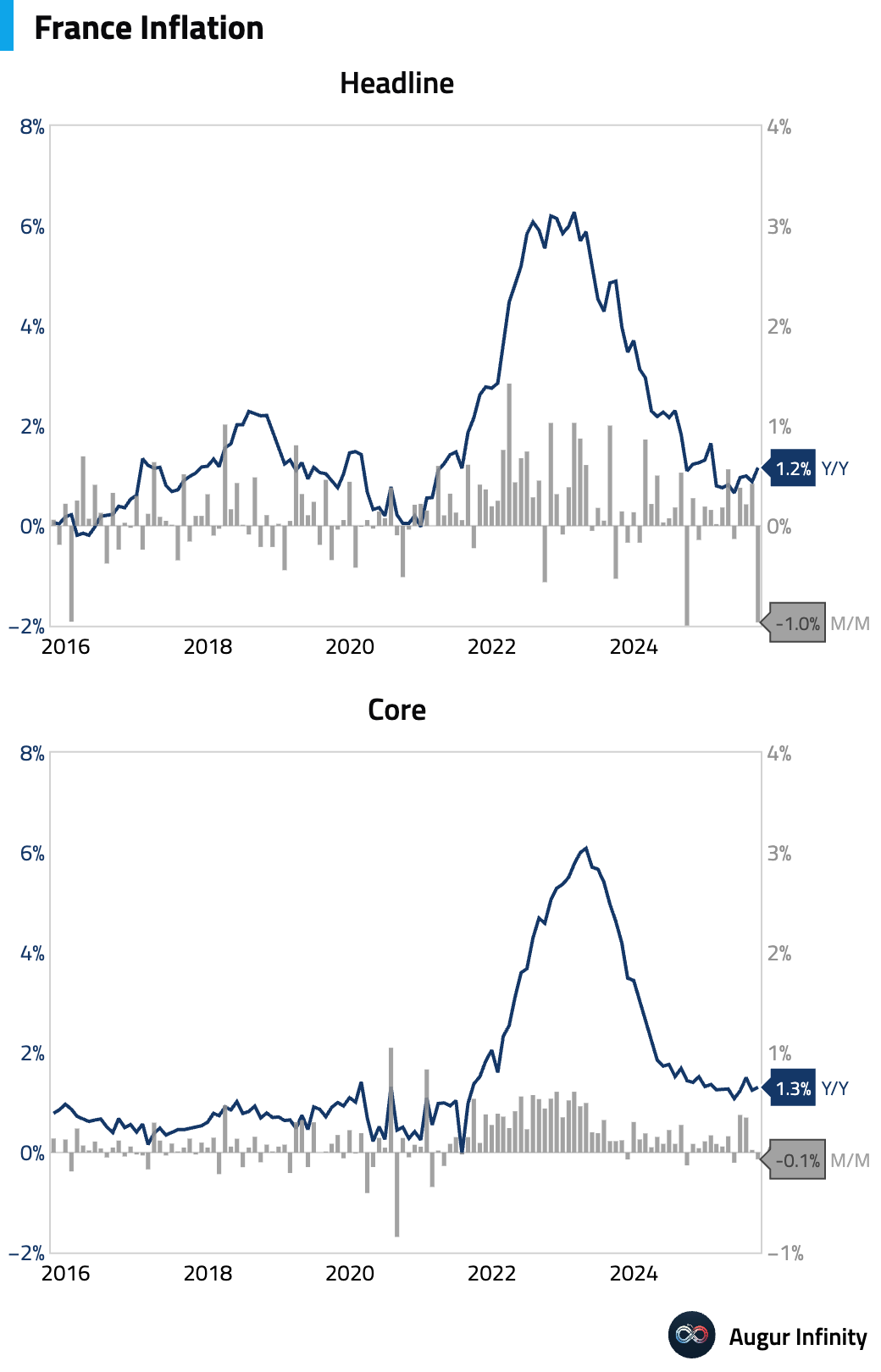
- The final reading for Spain’s CPI was 3.0% Y/Y, slightly above consensus. Final core inflation for September remained steady at 2.4% Y/Y, coming in a touch above the flash estimate.
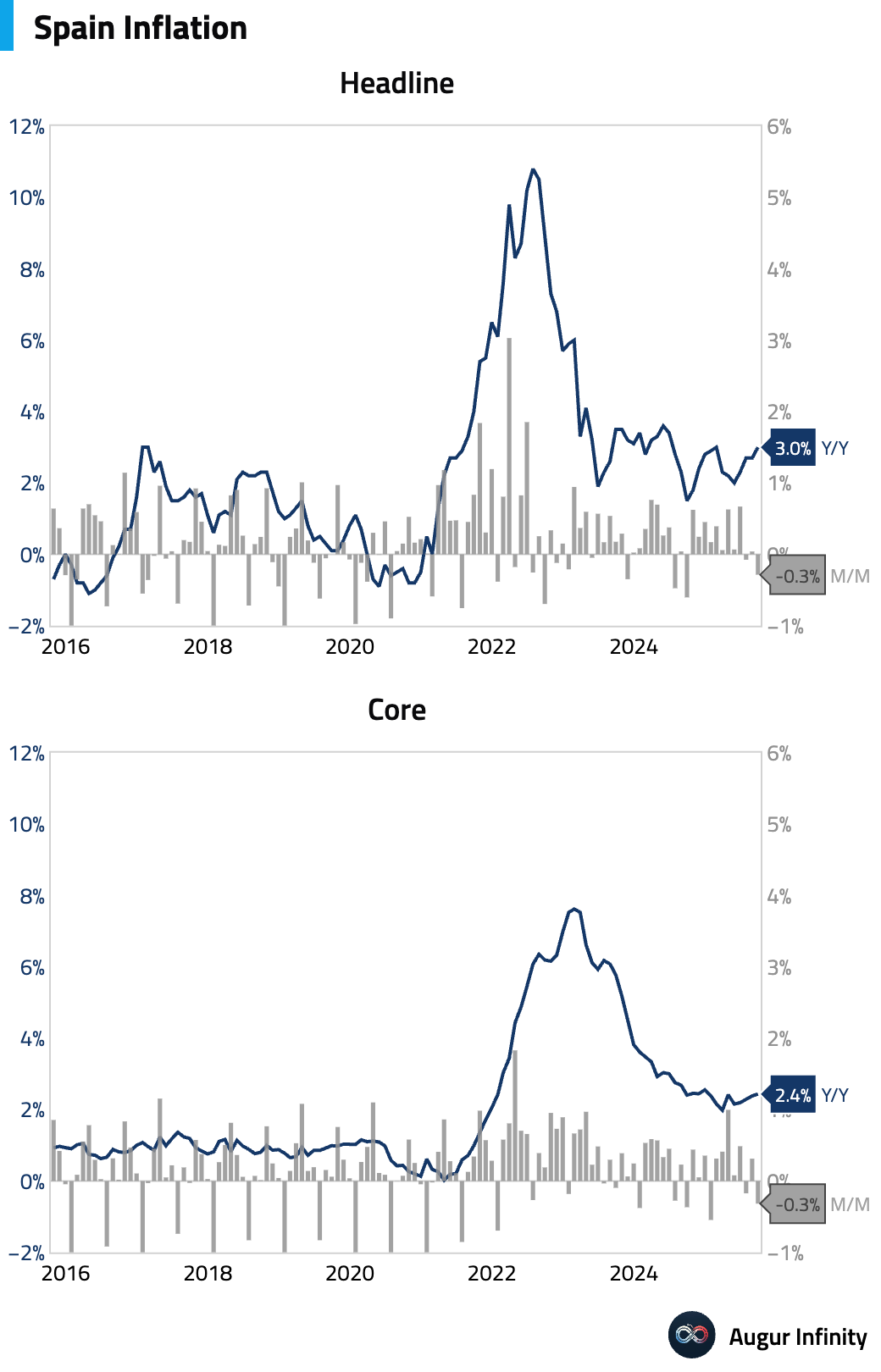
Interactive chart on Augur Infinity
- Sweden’s final CPIF rate, which holds mortgage costs constant, slowed to 3.1% Y/Y.
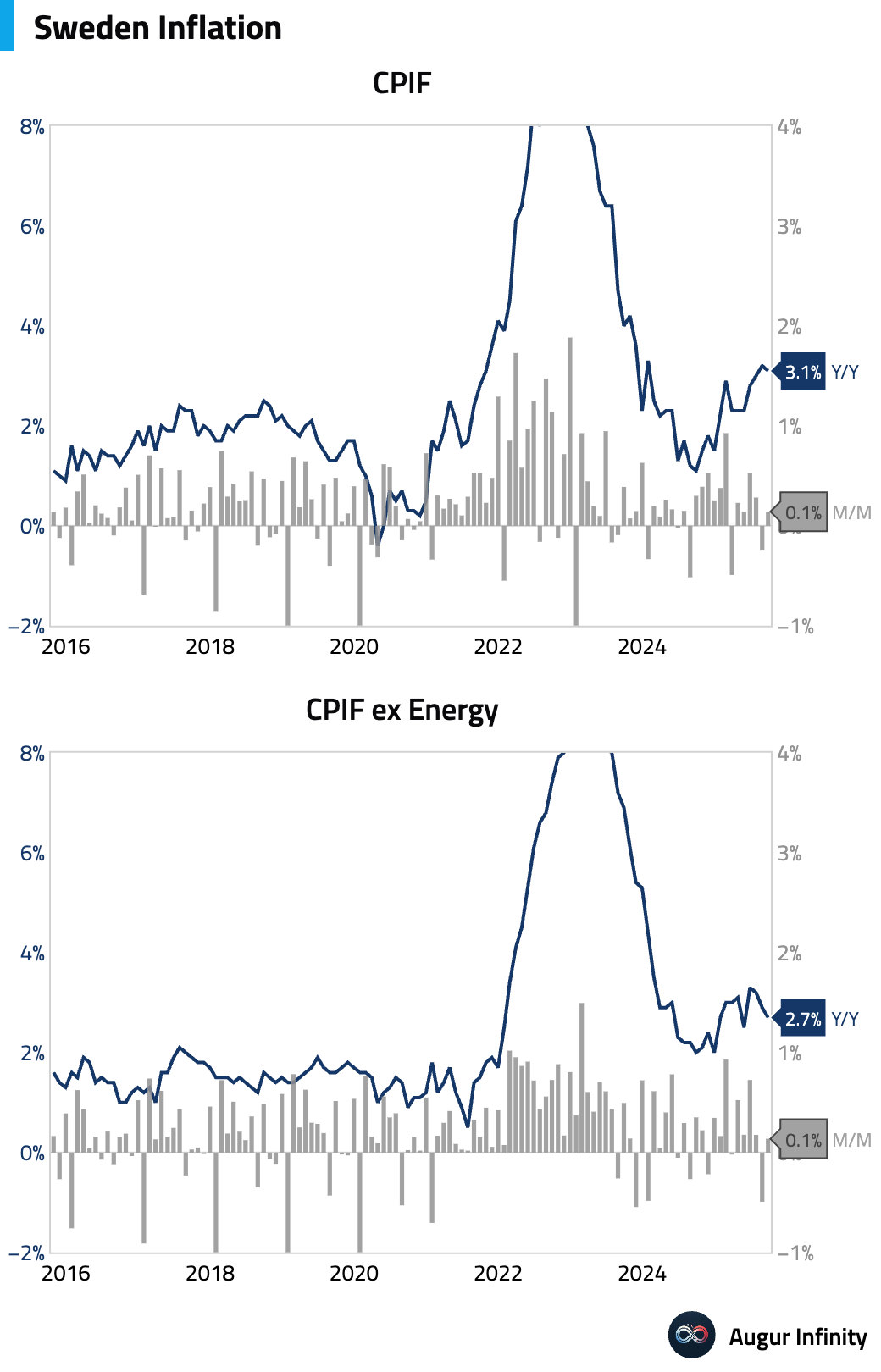
Interactive chart on Augur Infinity
- Poland's final September CPI was confirmed at 2.9% Y/Y, with a flat 0.0% M/M reading for the second consecutive month. Falling food inflation was offset by a smaller drag from fuel prices. Core inflation is estimated to have remained steady at 3.2% Y/Y.
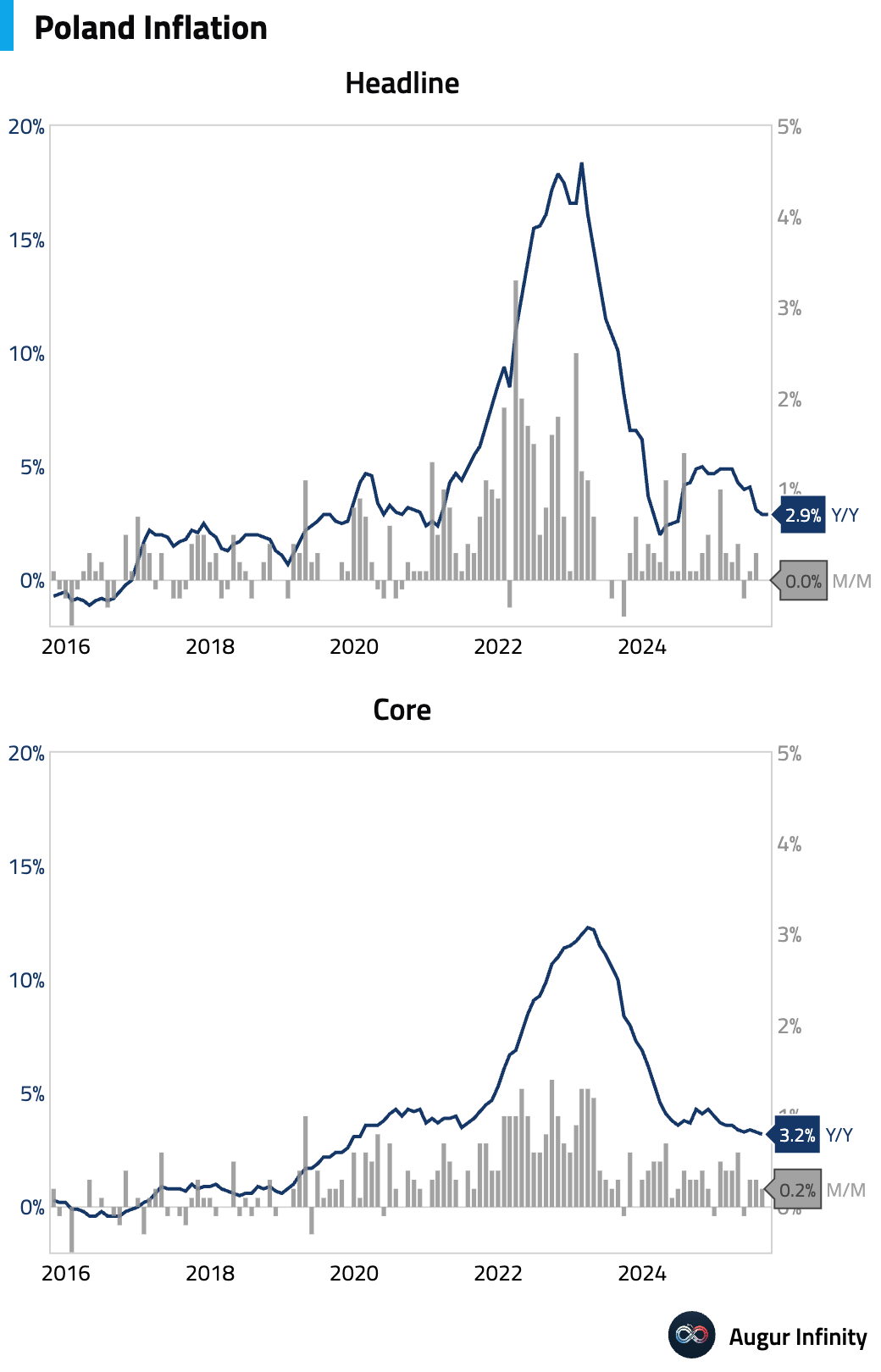
- Norway’s trade surplus narrowed in September, though less dramatically after seasonal adjustment.
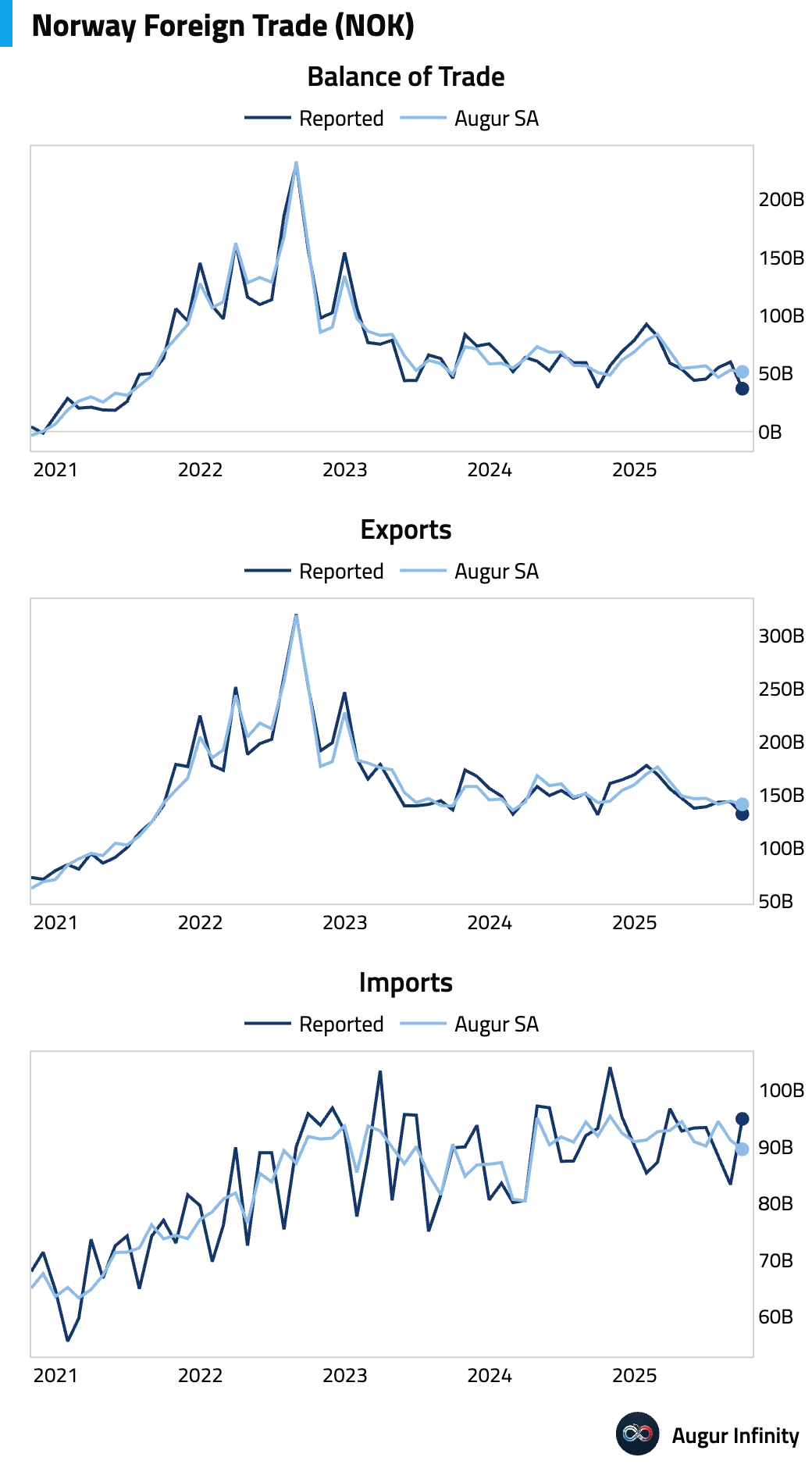
- Belgium’s trade surplus decreased in August.
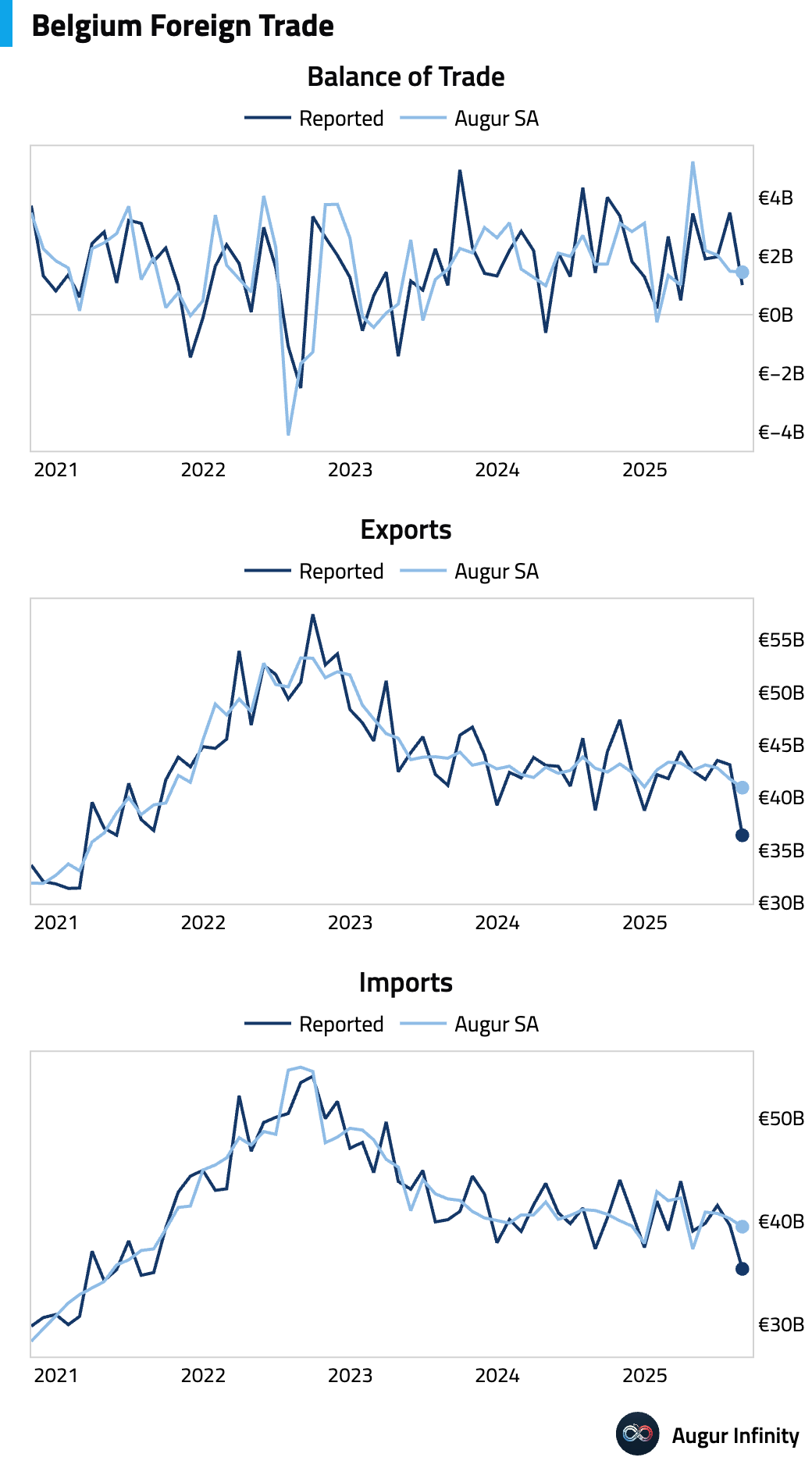
- Ireland's trade surplus edged lower in August.
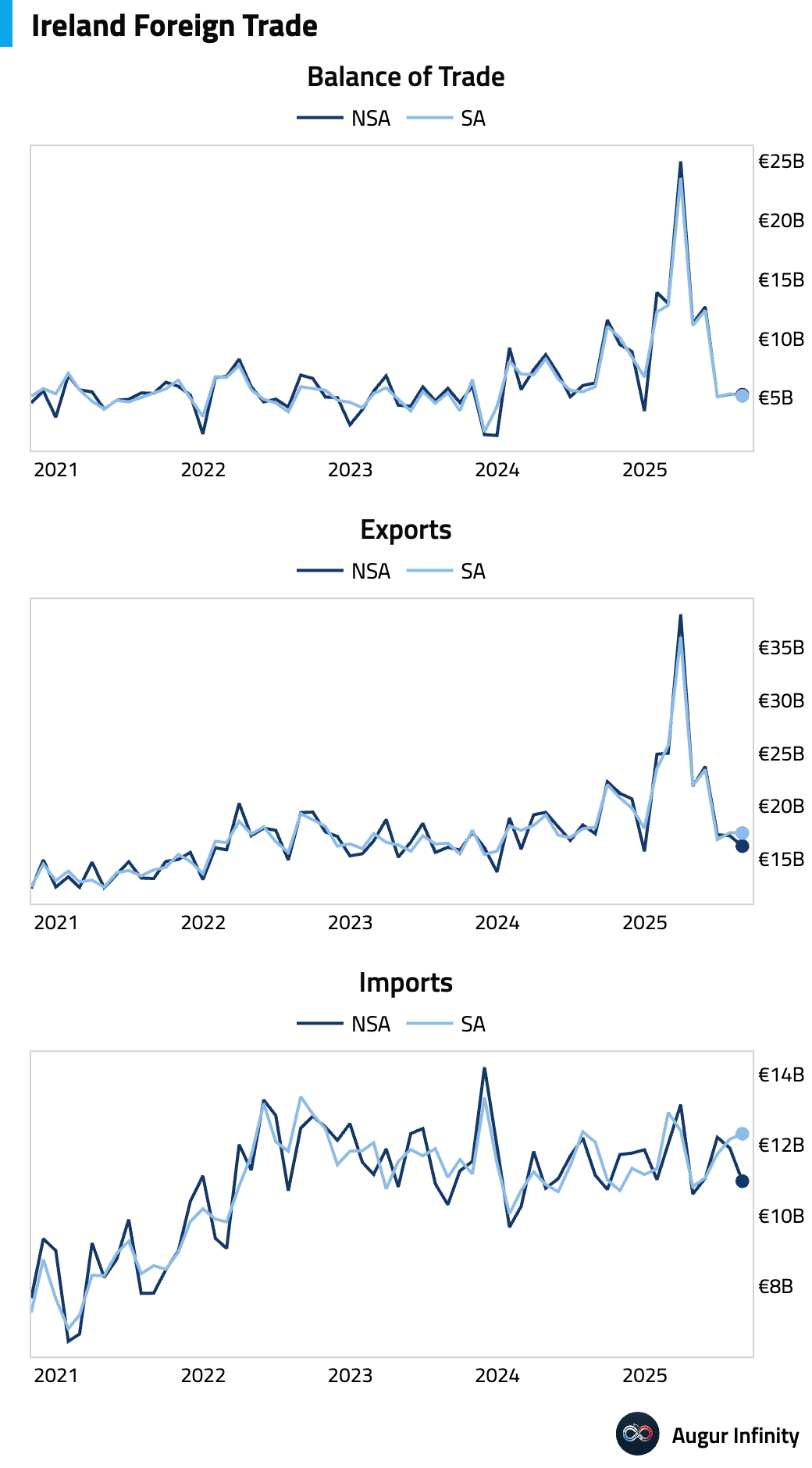
- Irish residential property prices accelerated in August, rising 1.0% M/M. The annual rate of price growth held steady at 7.4%.
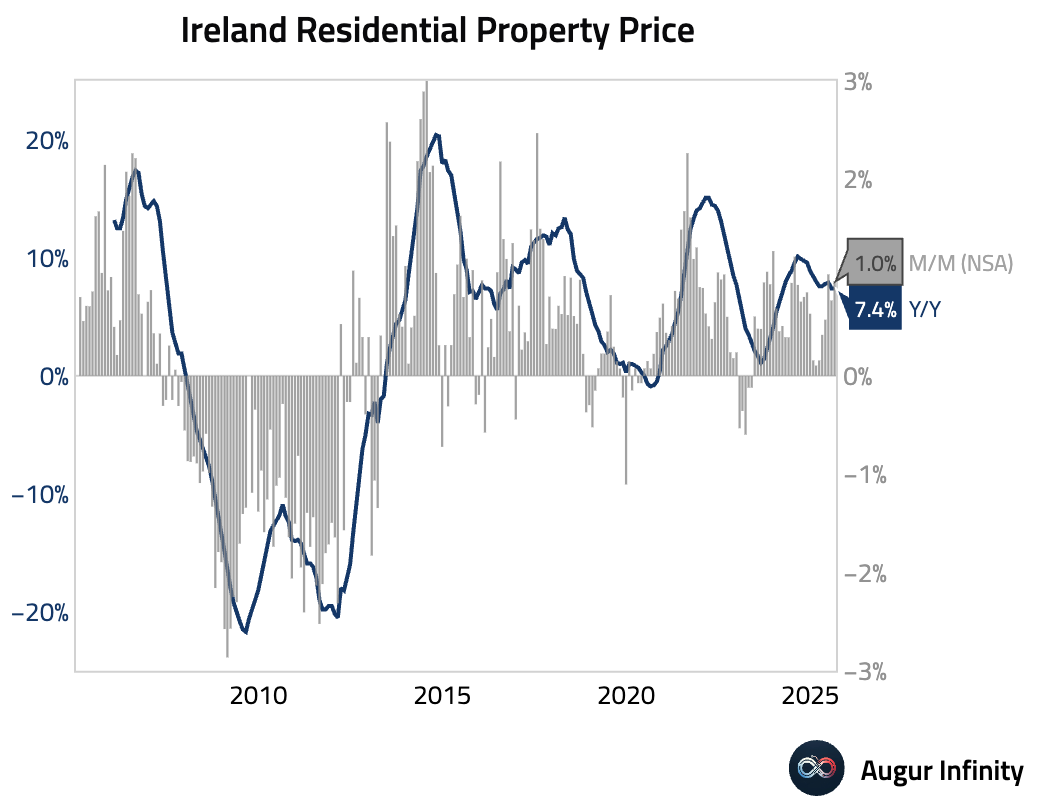
Asia-Pacific
- Japan's final industrial production figures for August were revised lower, showing a 1.5% M/M contraction, the weakest reading since November 2024.
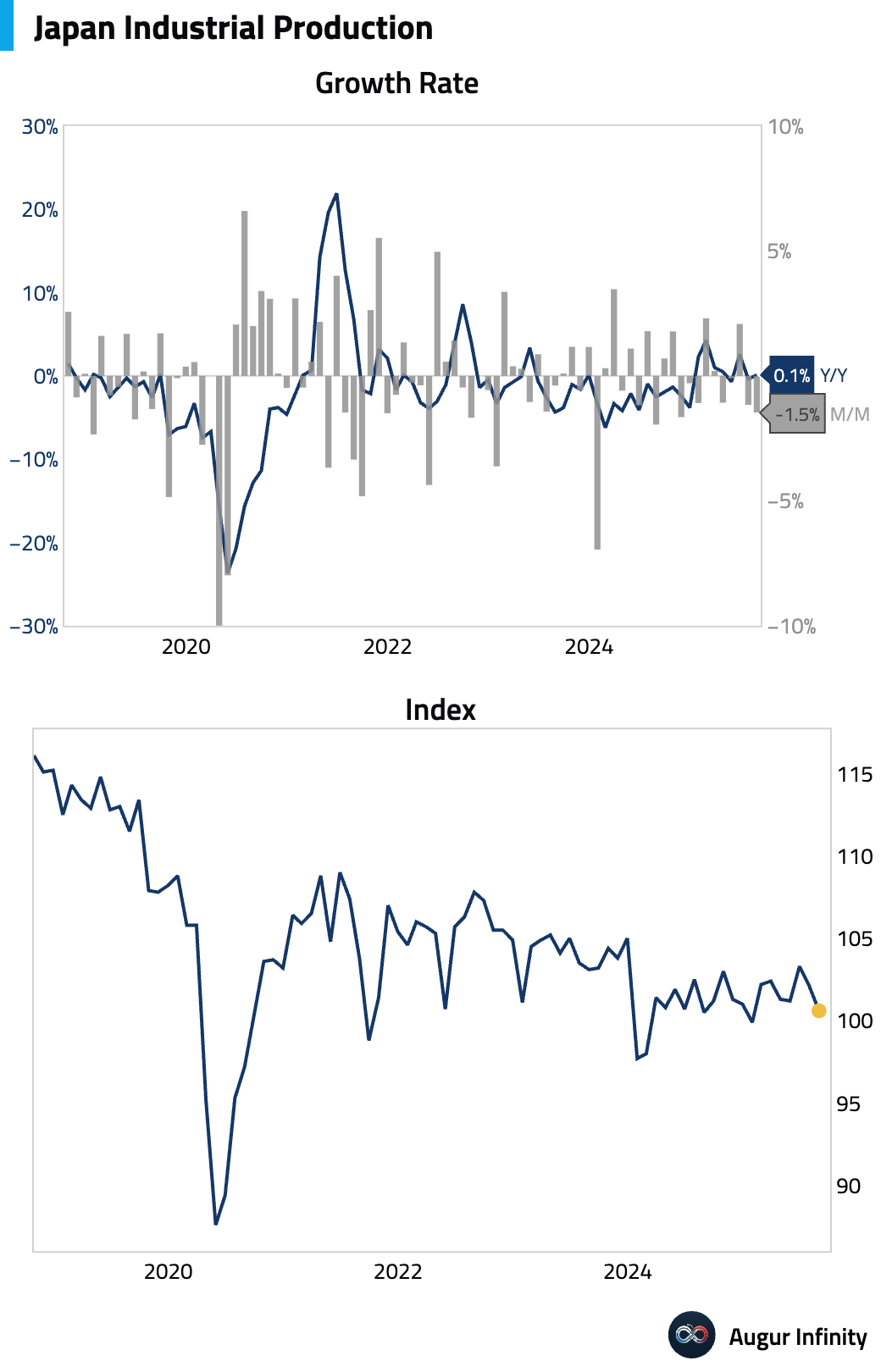
- Japanese capacity utilization fell for a third consecutive month.
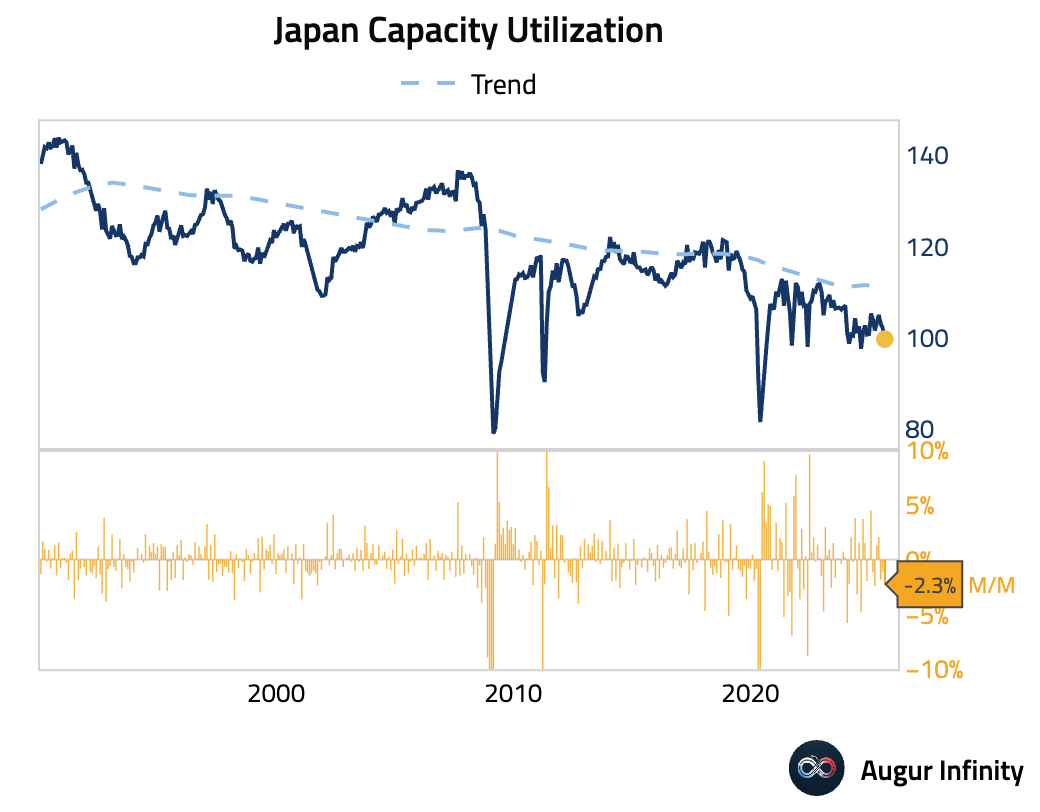
- Australia's Westpac Leading Index was flat in September, following a small decline in the prior month (act: 0.0% M/M, prev: -0.1%).
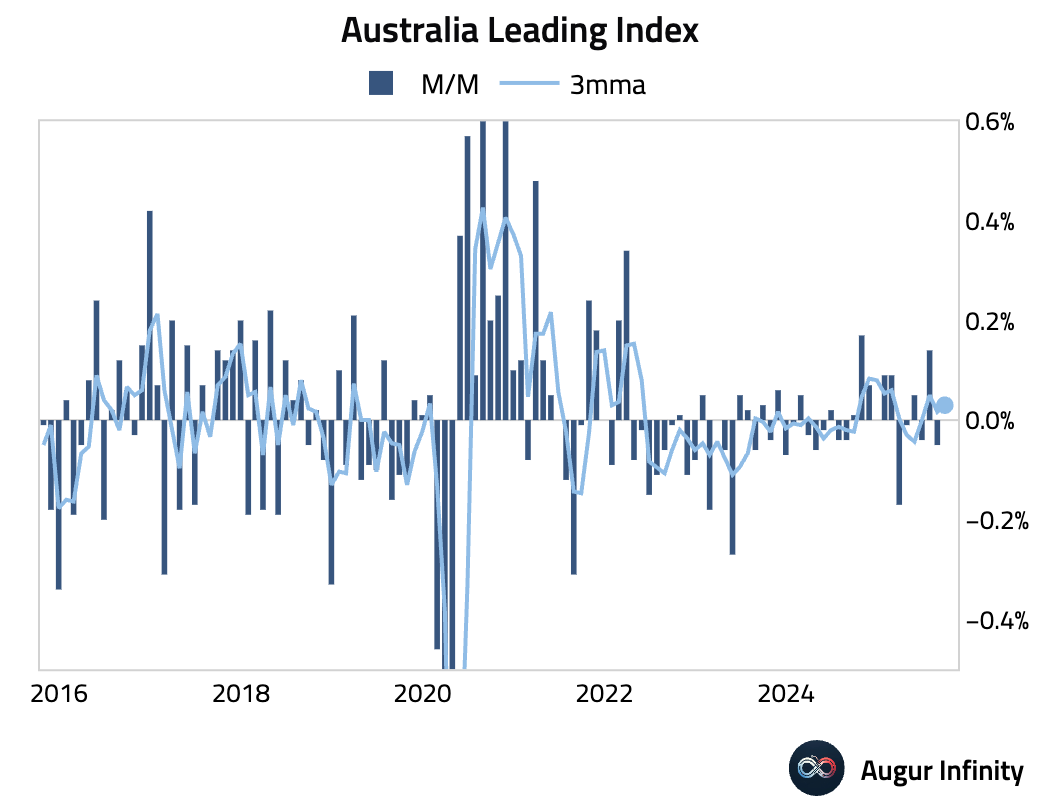
China
- China remains stuck in deflation, with CPI falling 0.3% Y/Y. On a monthly basis, prices rose 0.1%. The negative annual print was driven by falling food costs, but broader data signals severe deflationary pressures amid industrial overcapacity and weak domestic demand.
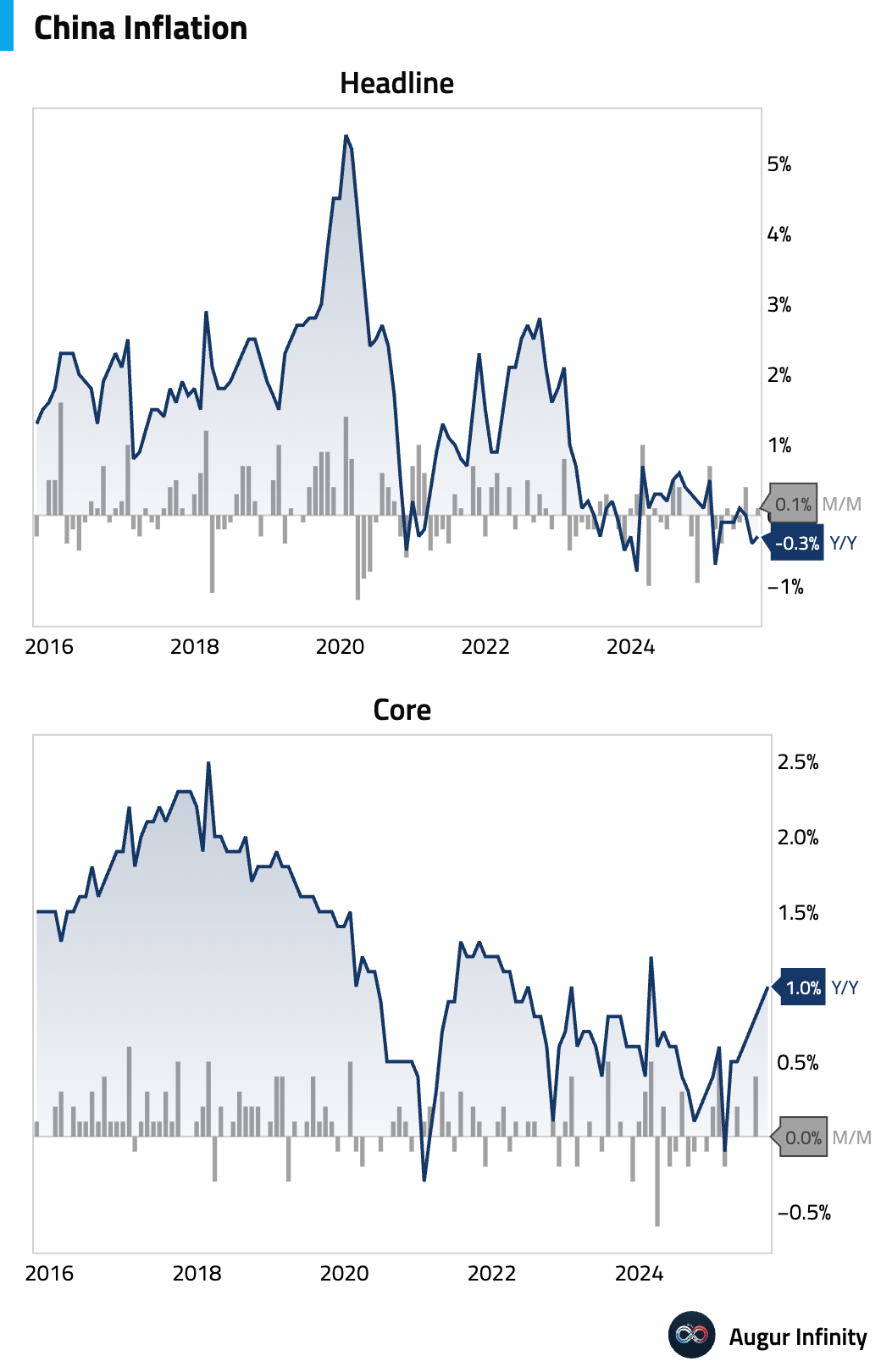
- Producer price deflation continued for a 36th straight month.
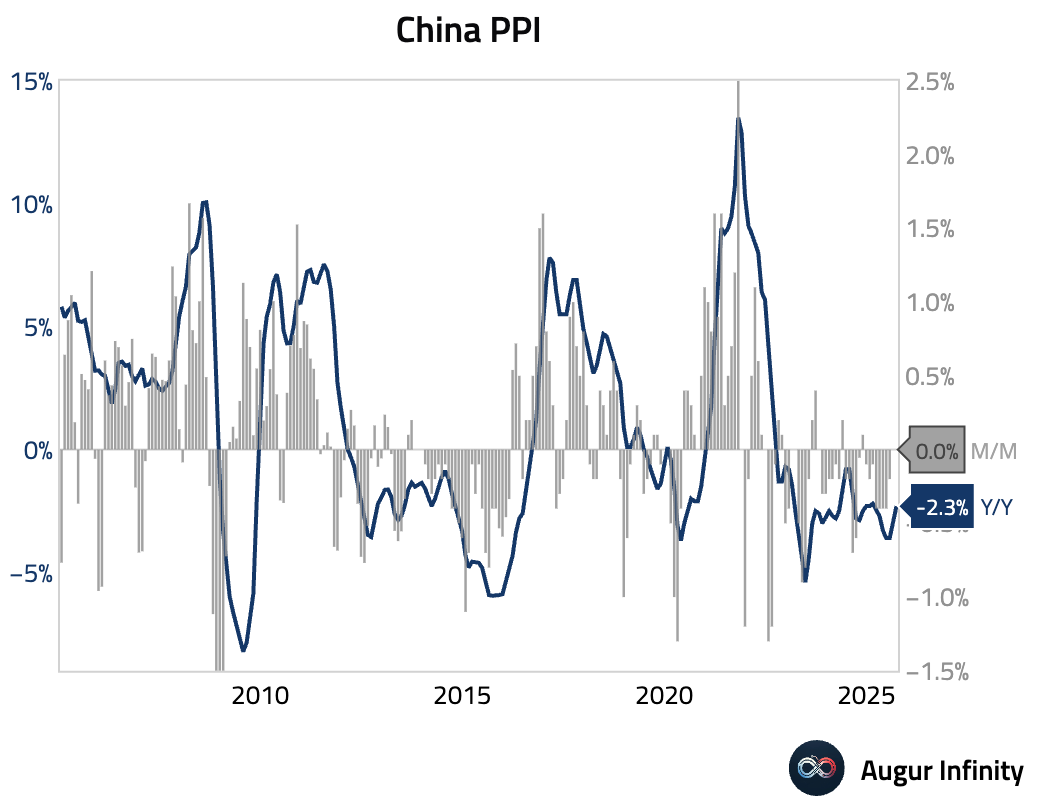
- Total Social Financing (TSF) beat estimates in September, driven by a rise in shadow banking and corporate bonds rather than stronger loan demand.
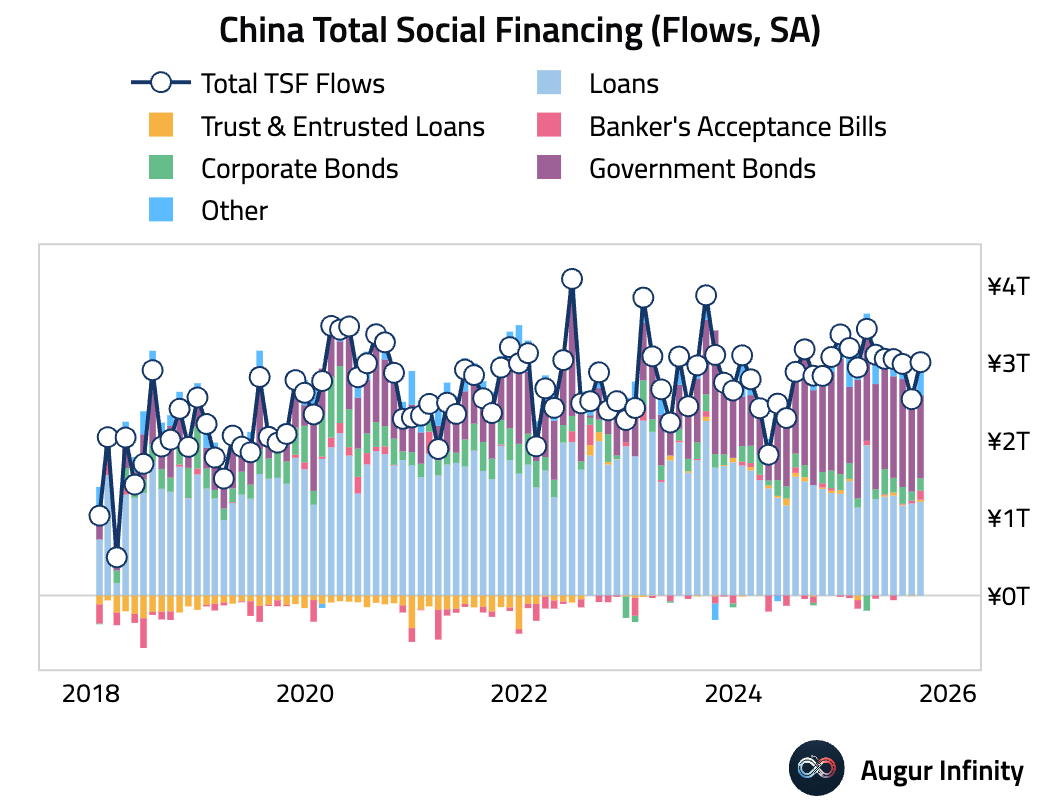
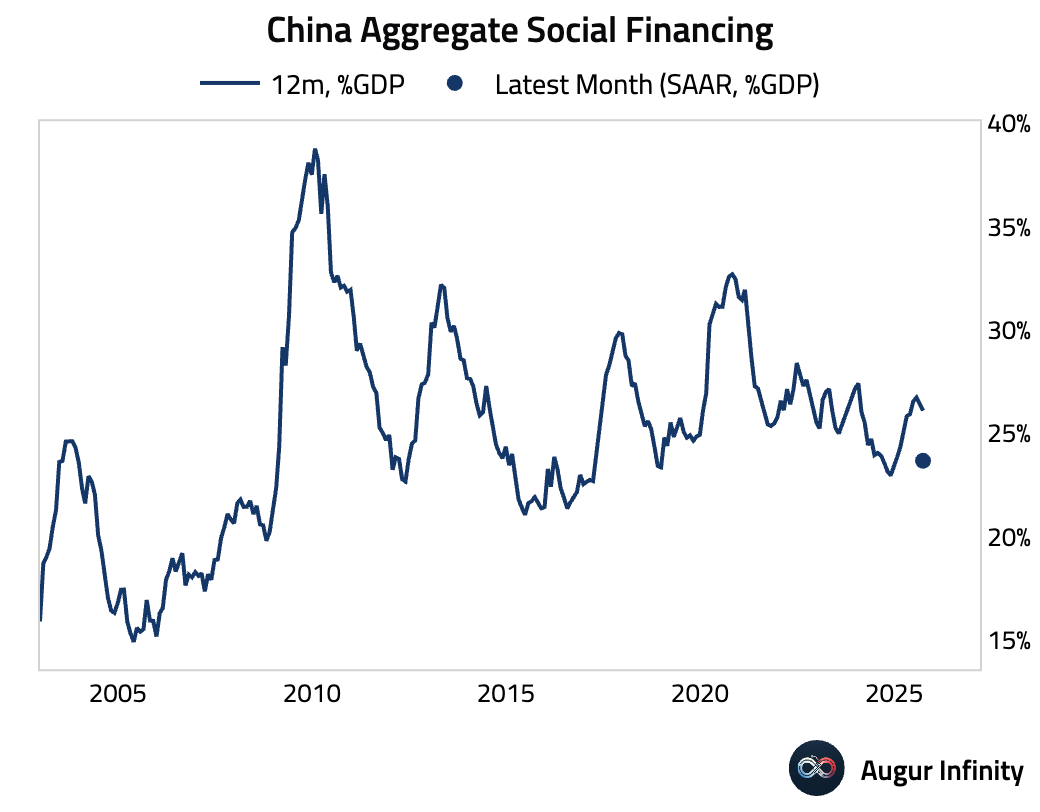
New bank loans missed expectations in September, with broad-based weakness across both households and corporates suggesting that real economy demand for credit remains poor despite recent policy support.
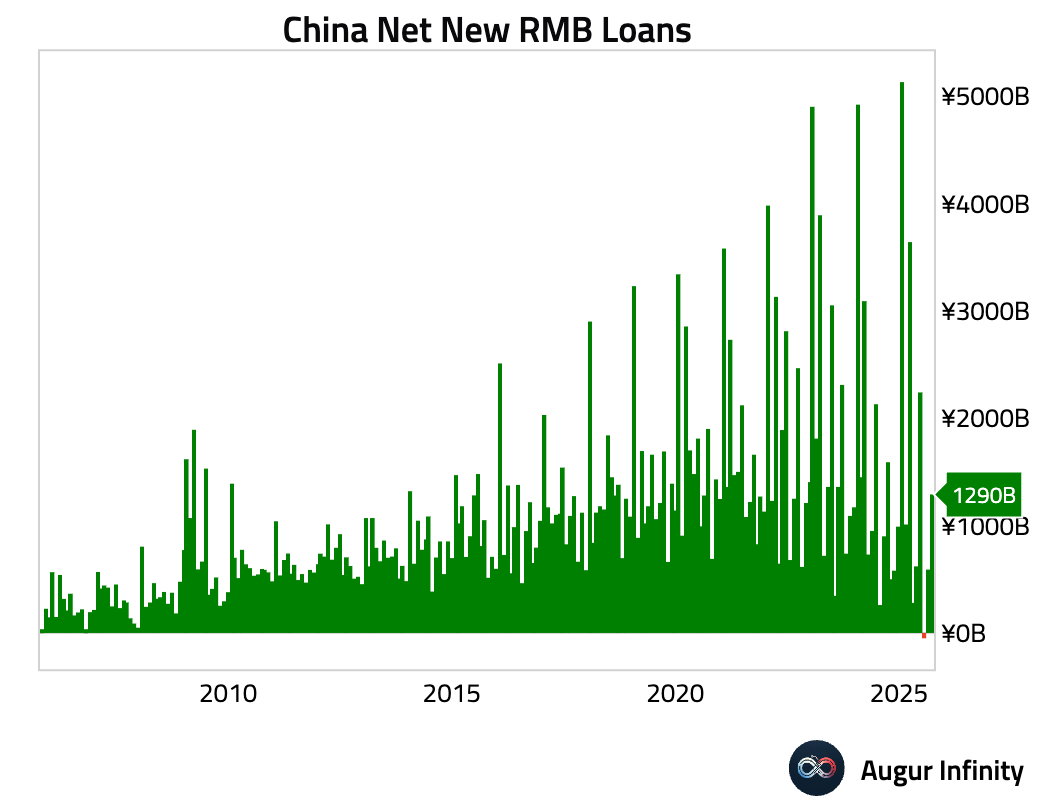
Outstanding loan growth decelerated to 6.6% Y/Y, its slowest pace since 2000, underscoring sluggish credit expansion.
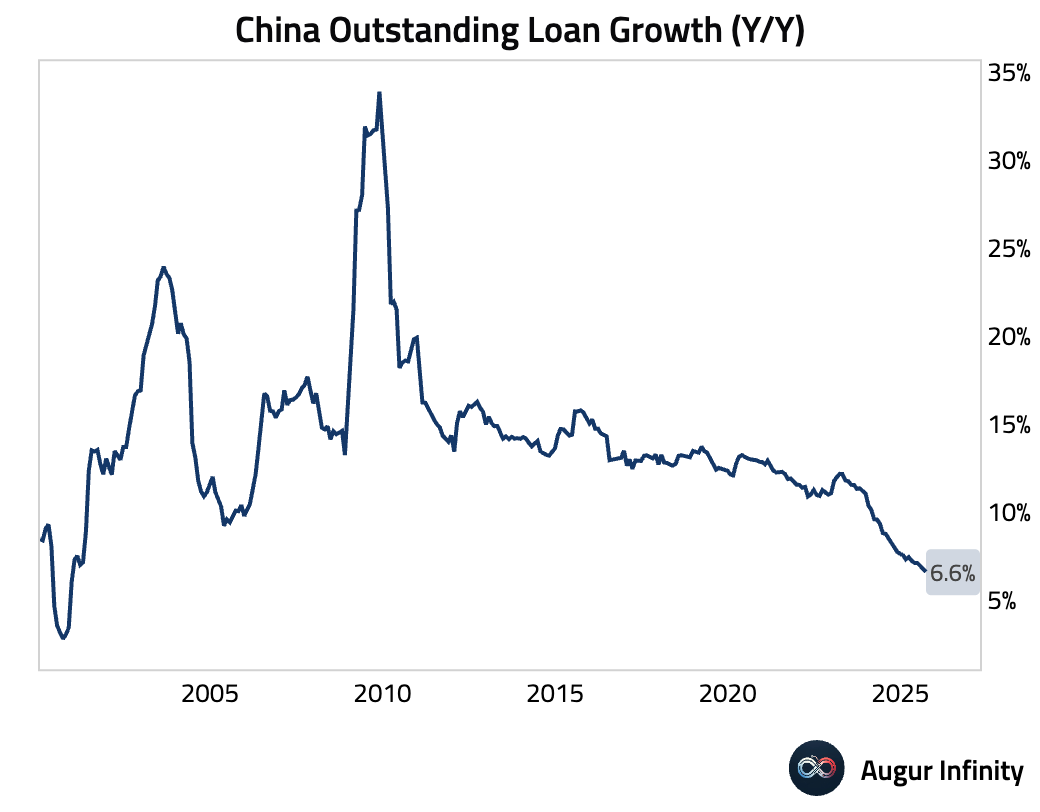
- China's M2 money supply growth slowed to 8.4% Y/Y in September. Meanwhile, M1 growth accelerated to 7.2% Y/Y, likely driven by a pickup in fiscal spending as government deposits fell sharply, suggesting fiscal support is flowing into the economy and boosting cash in circulation.
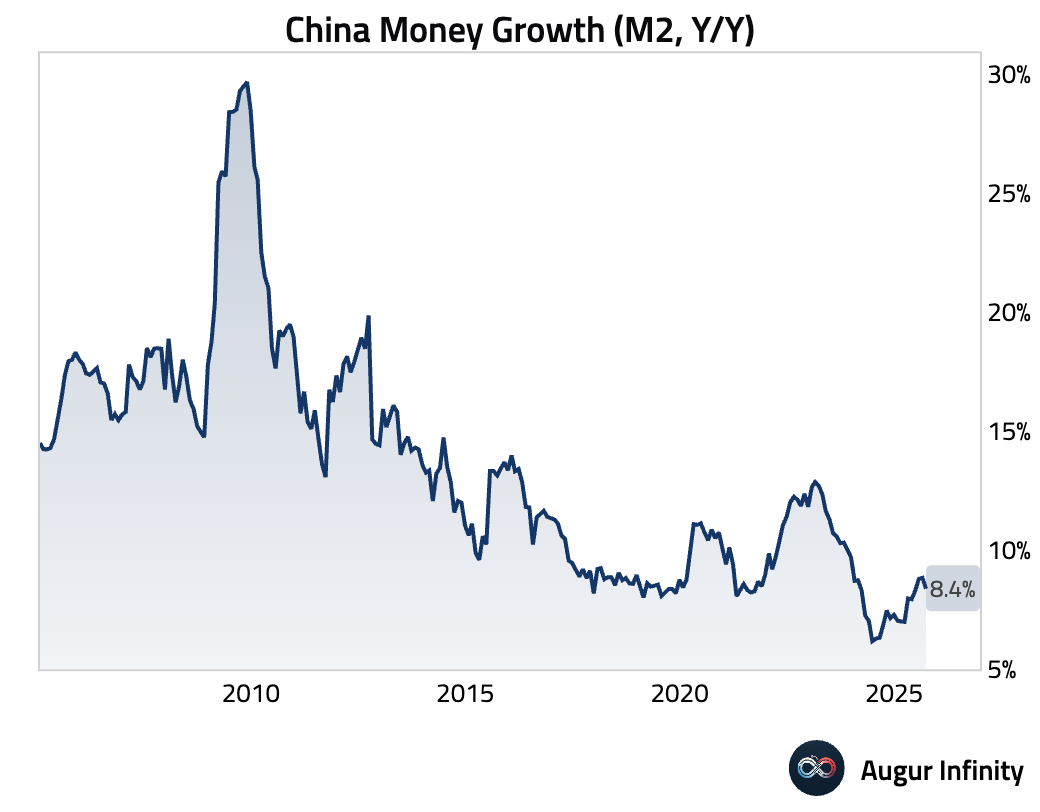
- China boosted its defense of the yuan, setting the daily fixing at 7.0995 per dollar, stronger than the closely watched 7.1 level.
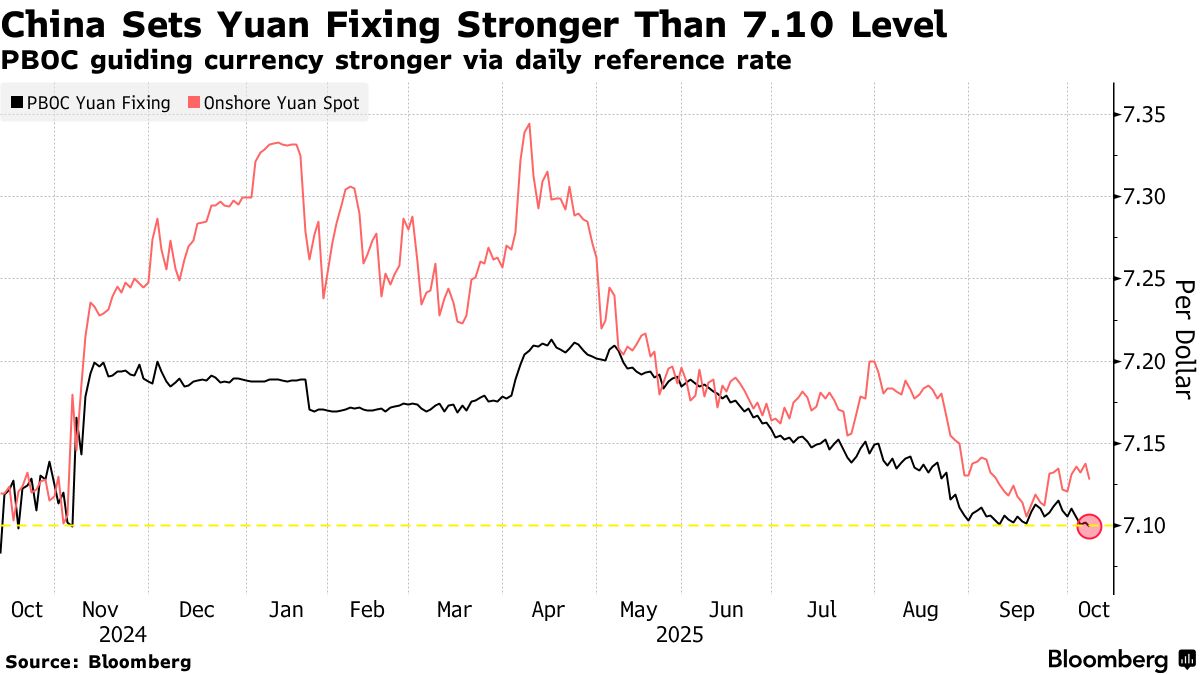
Source: Bloomberg
Emerging Markets ex China
- India's trade deficit widened in September as a surge in imports outpaced a modest rise in exports.
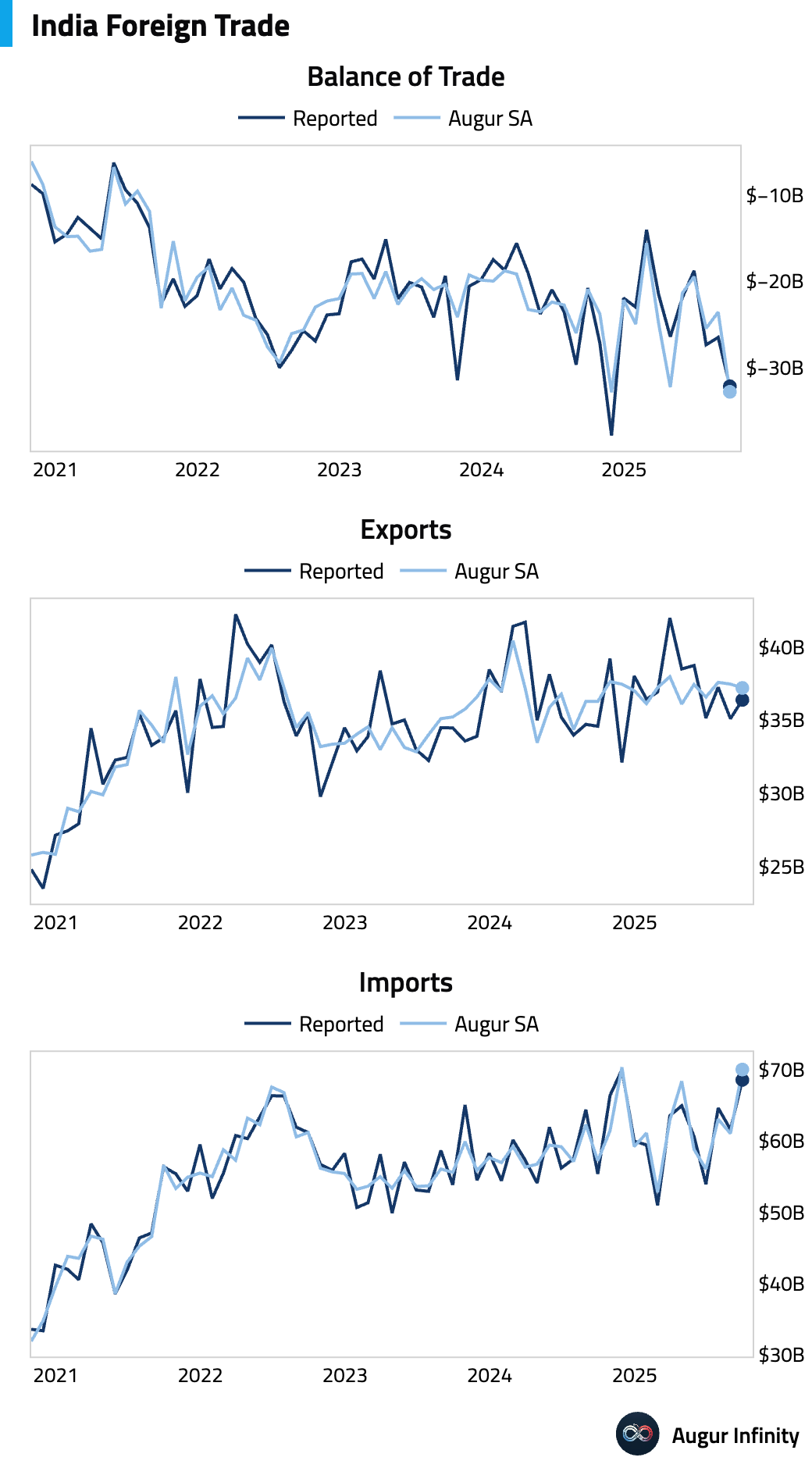
- Passenger vehicle sales in India continued to contract on a year-over-year basis in September.

- India's unemployment rate edged up slightly in September (act: 5.2%, prev: 5.1%).
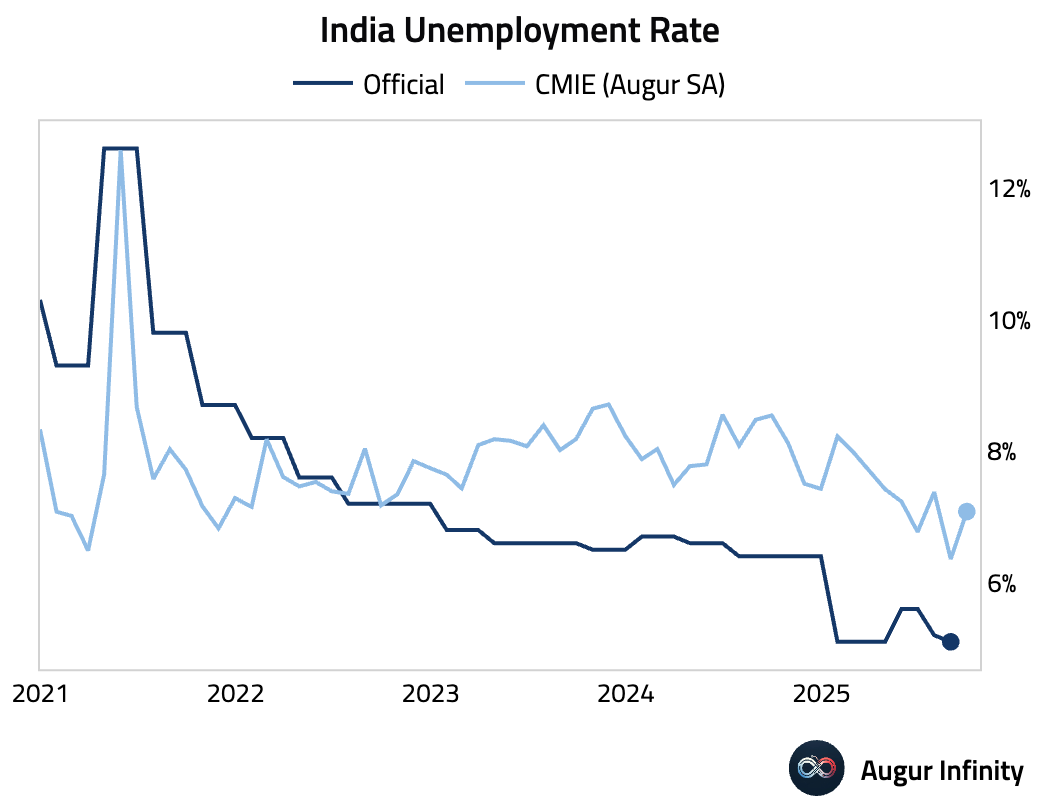
- Brazilian retail sales rebounded in August.
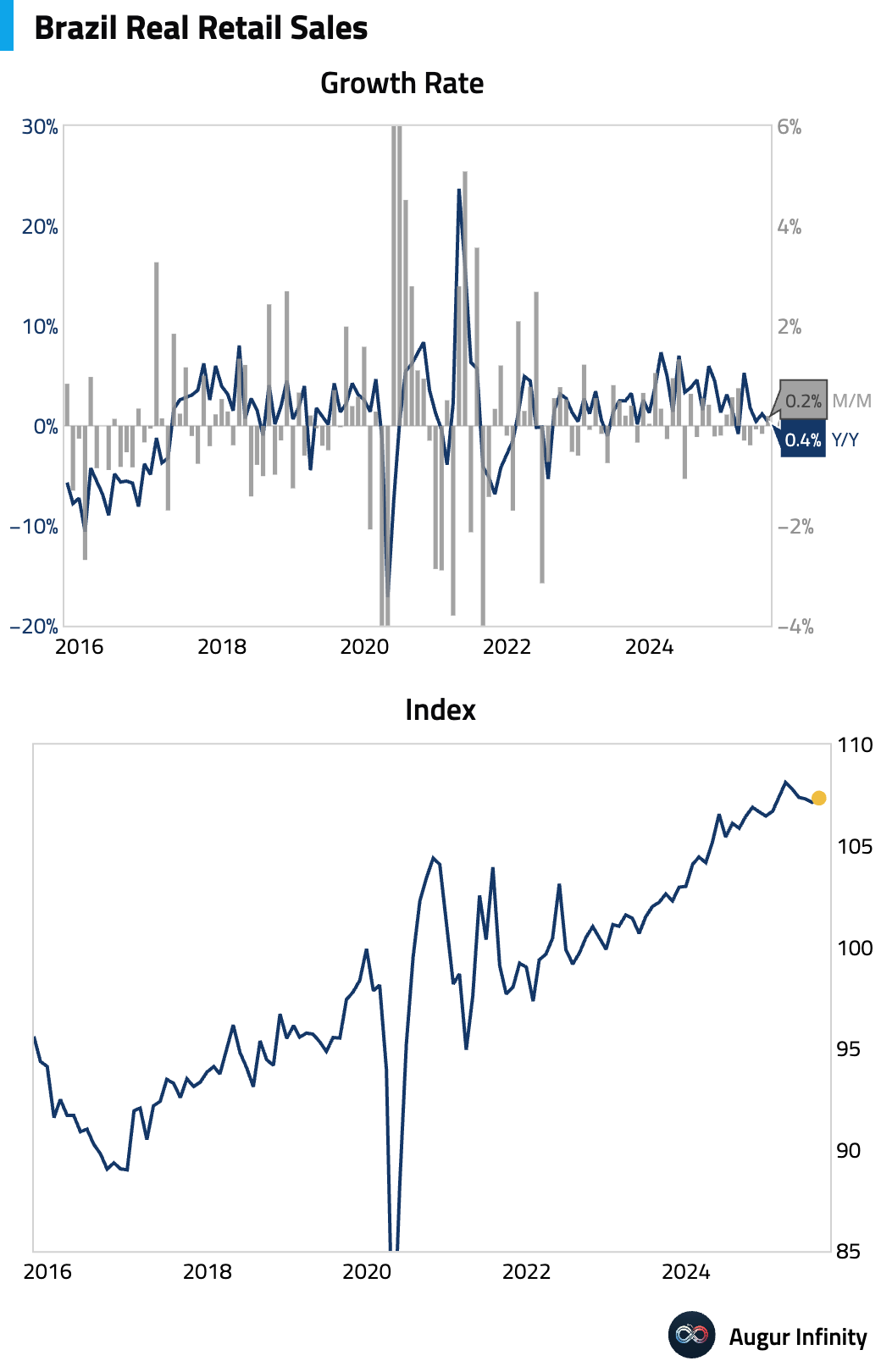
- South African retail sales fell.
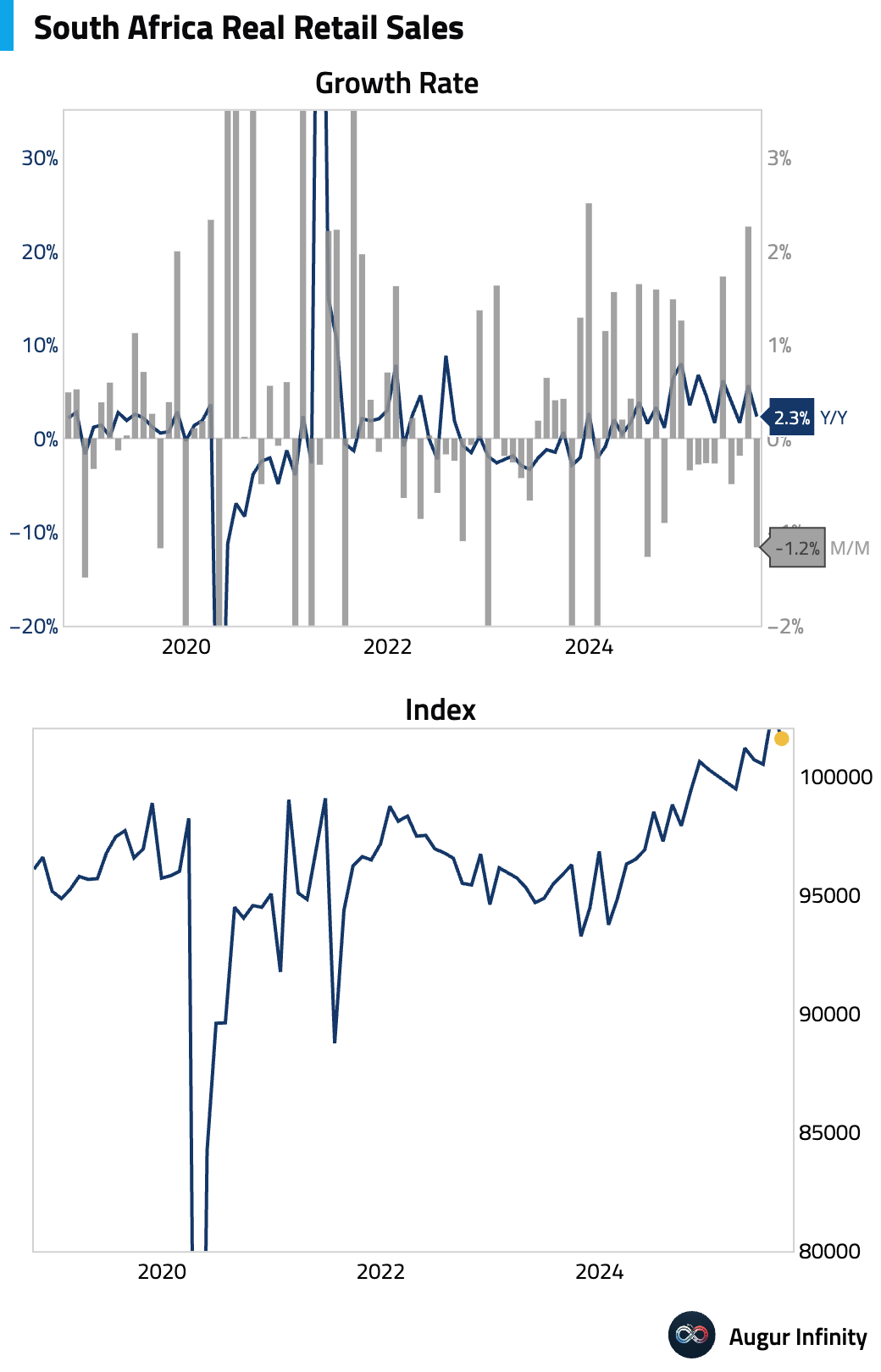
- Turkey posted a significant budget deficit in September after recording a surplus in August.
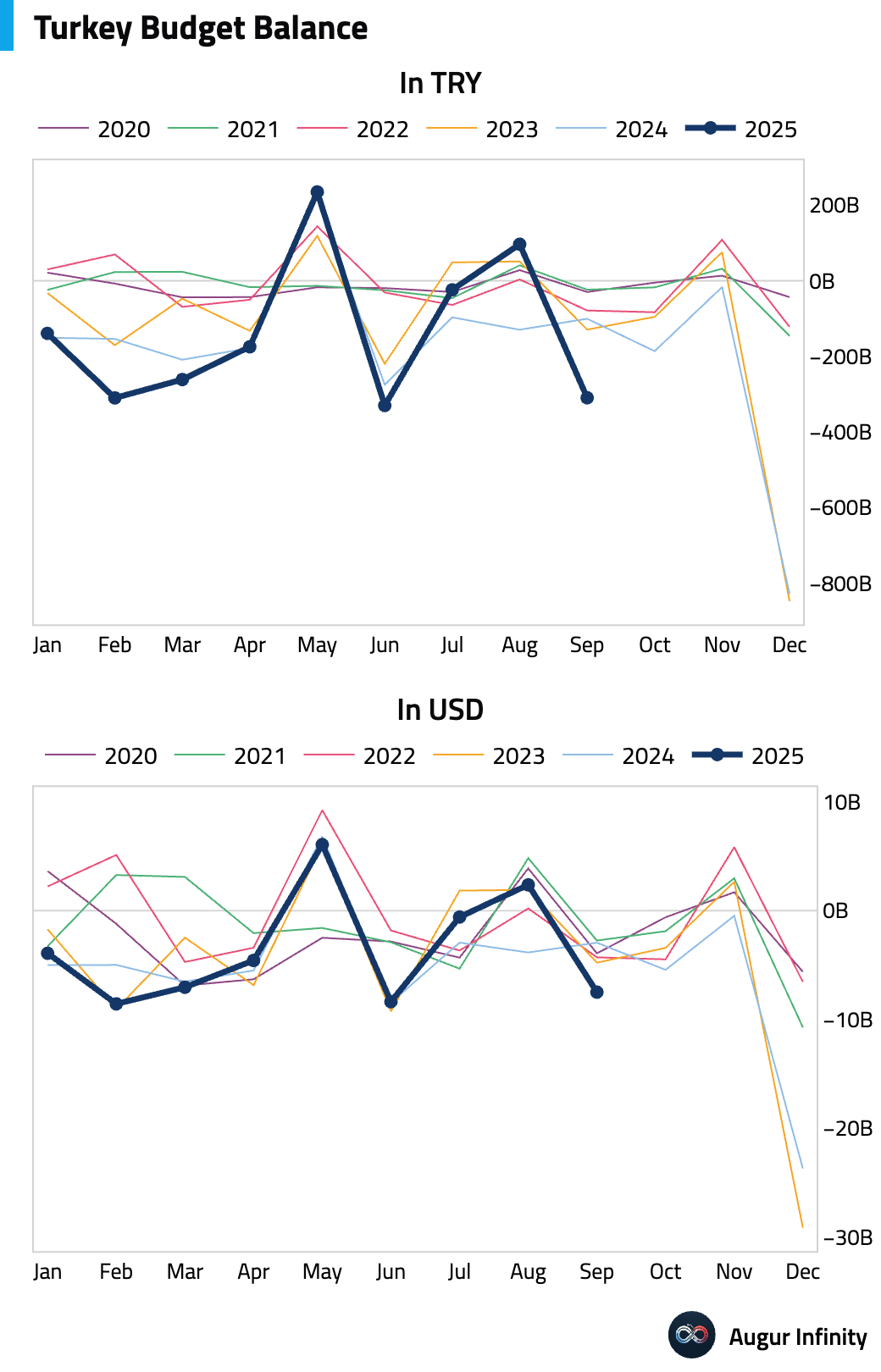
- Argentina's overnight collateralized peso repo rate jumped to a record 142% after US ties support to election.
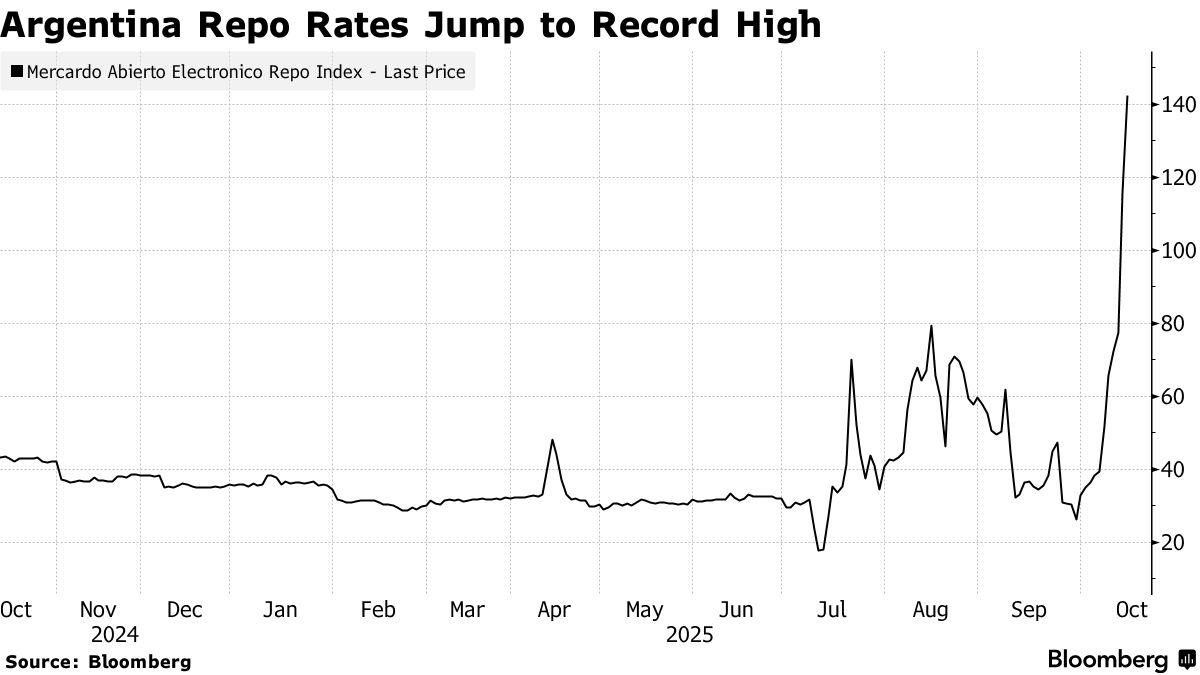
Source: Bloomberg
Global Markets
Equities
- Global equities advanced, but with great intraday volatility. US stocks gained, with the S&P 500 up 0.4% and the Nasdaq climbing 0.7%. South Korea was a notable outperformer, surging 3.0% on signs of a recovery in technology demand. In Europe, French equities rose 0.5%, marking a third consecutive day of gains after the government paused unpopular pension reforms, while German stocks declined 0.4%. Australian shares also posted a third straight gain, rising 0.7%.
- S&P 500 Consumer Staples rose above its 50-day moving average.
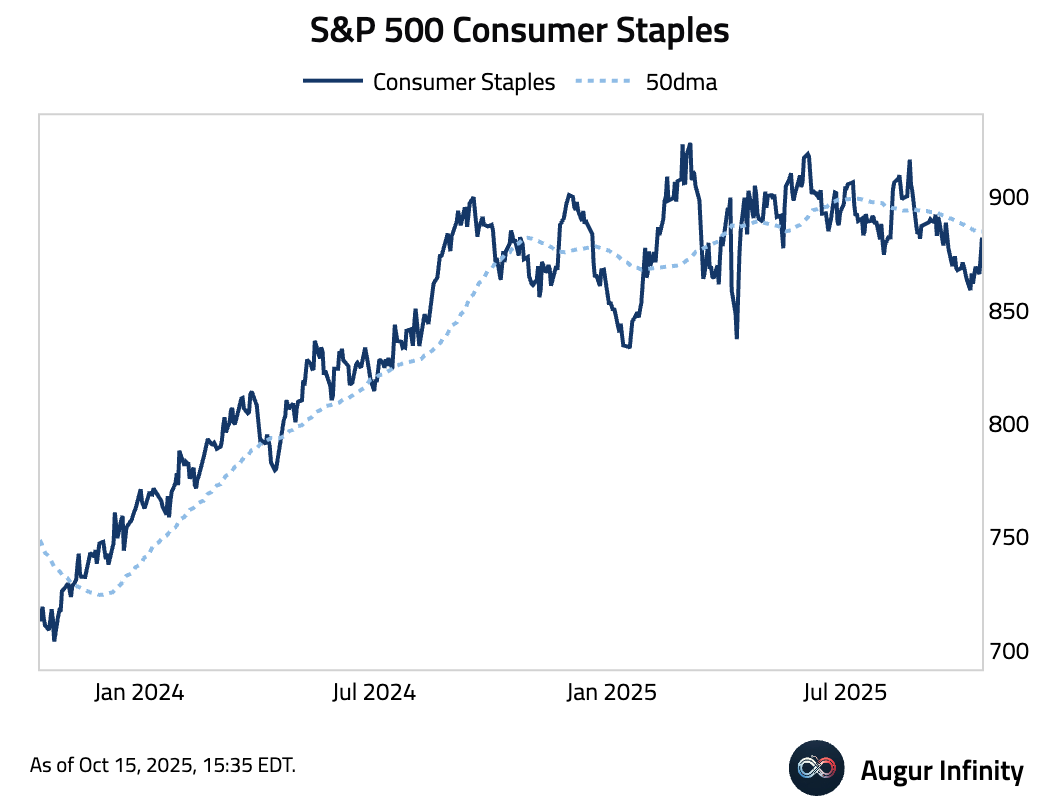
- Russell 2000 Index touched its fifth all-time high this year.
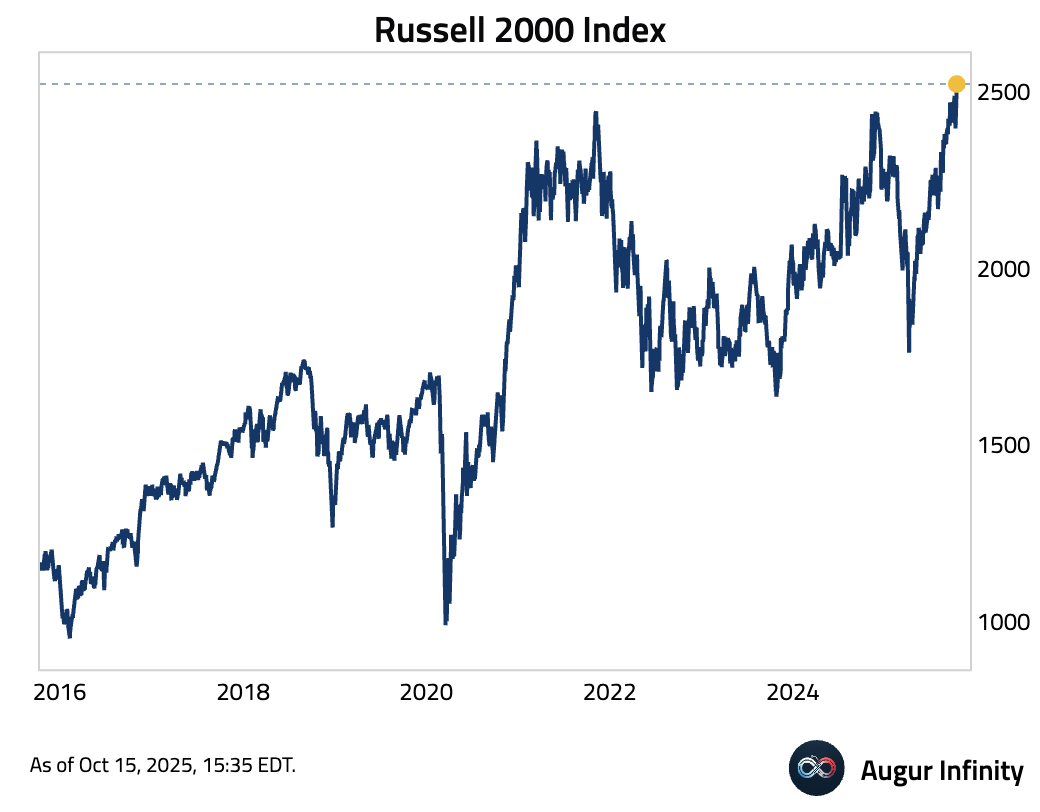
- US Small Cap vs. Large Cap is at the highest level since February 2025.
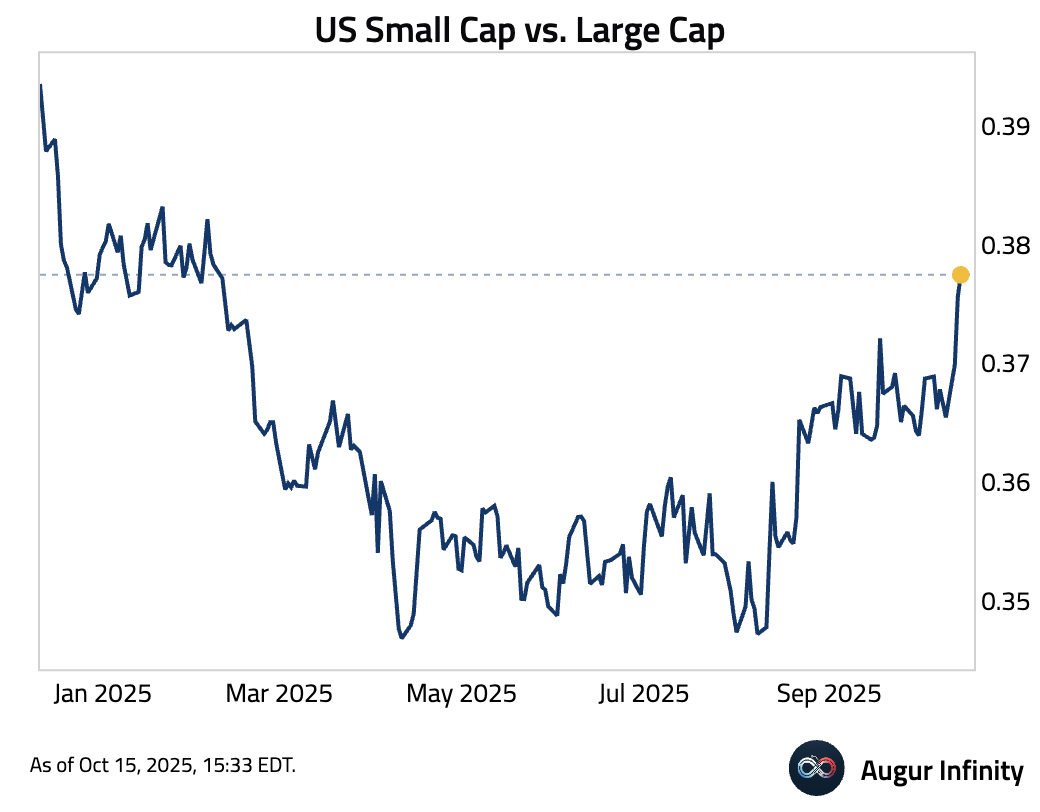
- S&P/TSX Composite reached the 52nd all-time high of the year.
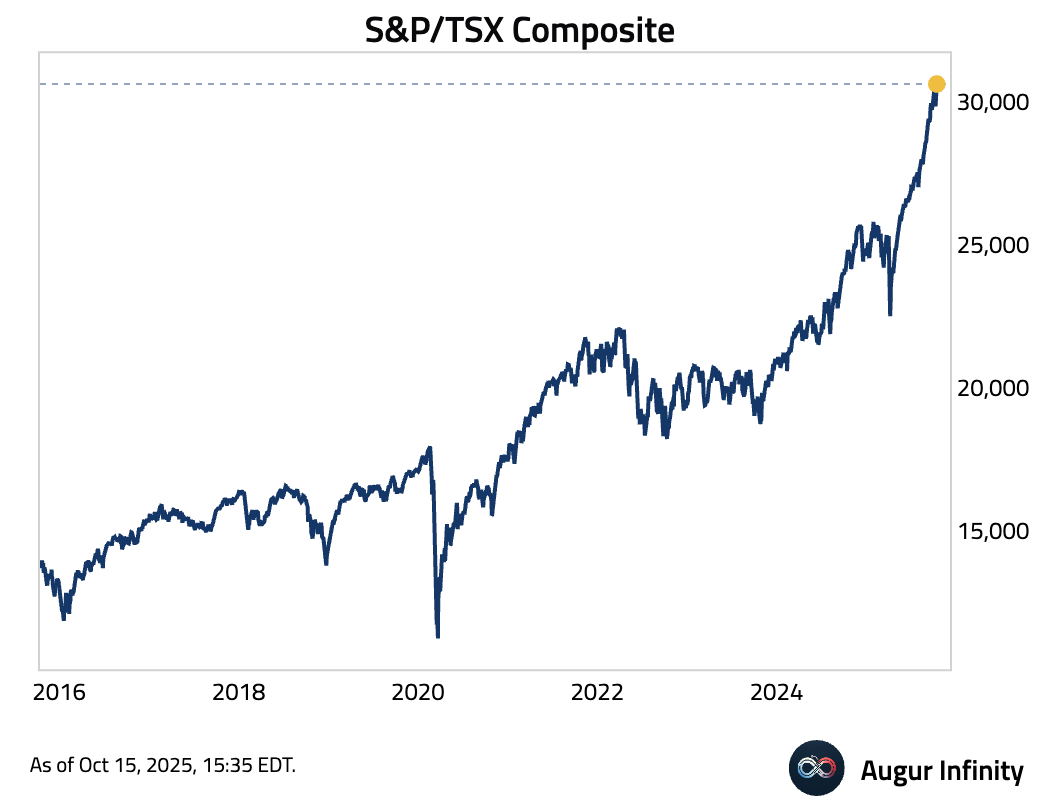
- BofA's investor sentiment gauge has risen to the highest level since February …
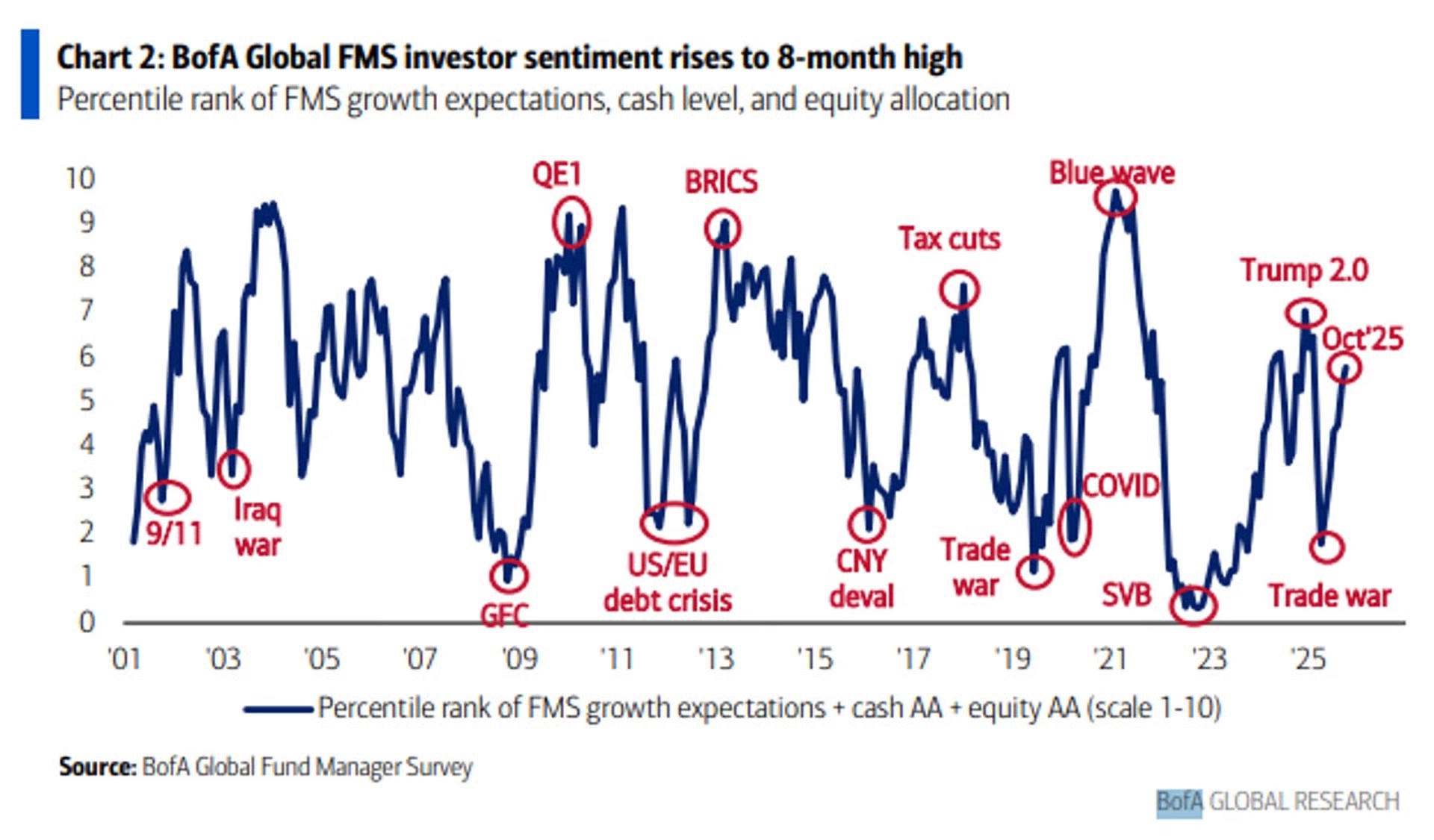
Source: Bank of America
… even as a record net 60% of BofA FMS investors say global stocks are overvalued.
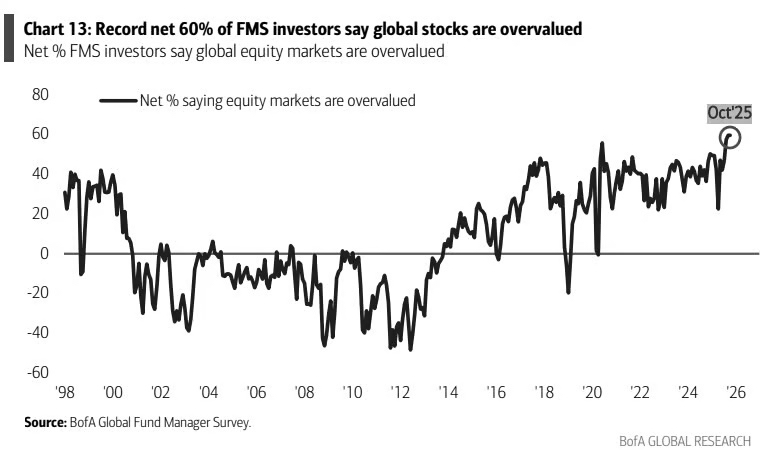
Source: Bank of America
Fixed Income
- US Treasury yields rose across the curve. The 2- and 5-year yields each increased by 2.4 bps, while the 10- and 30-year yields rose more modestly by 1.6 bps and 1.0 bps, respectively, resulting in a slight flattening of the yield curve.
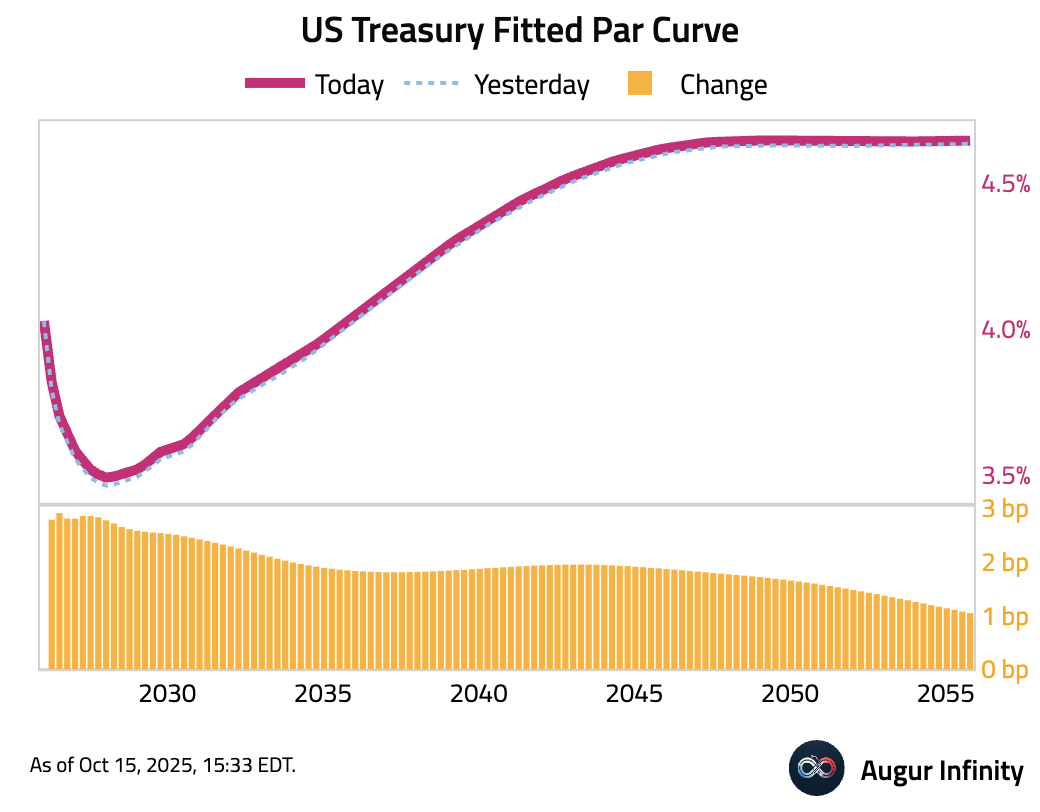
- France 10-year yield fell below its 100-day moving average.
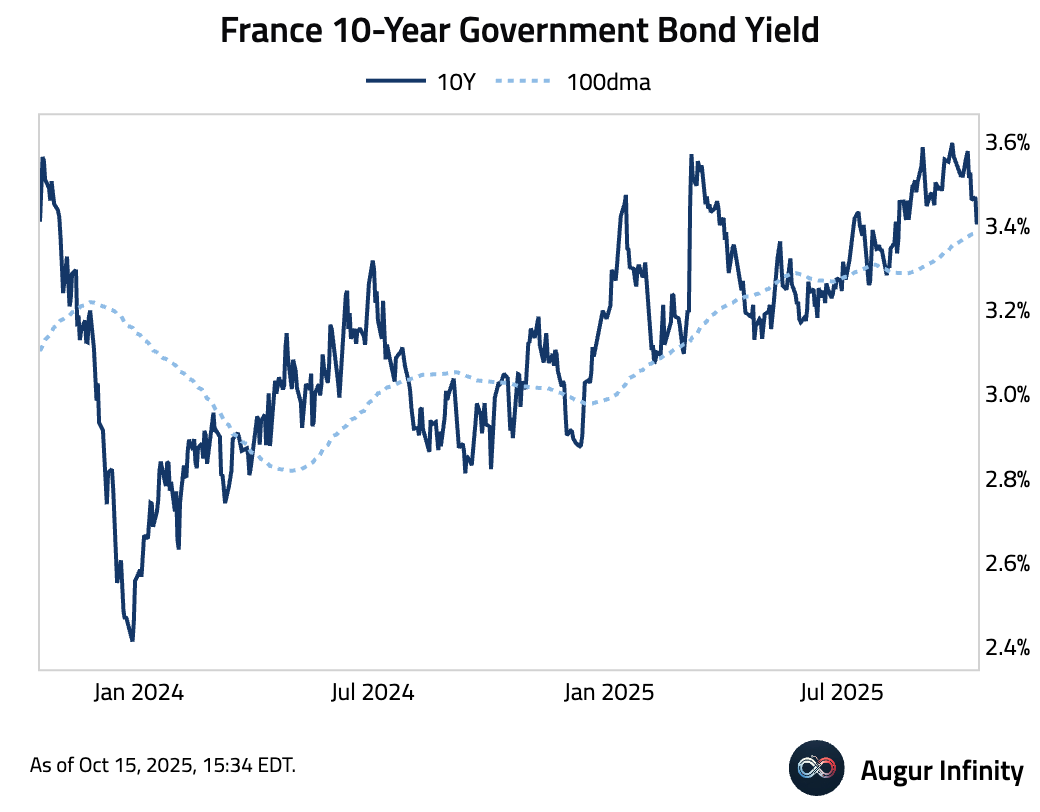
Commodities
- Gold and silver continue to march higher.
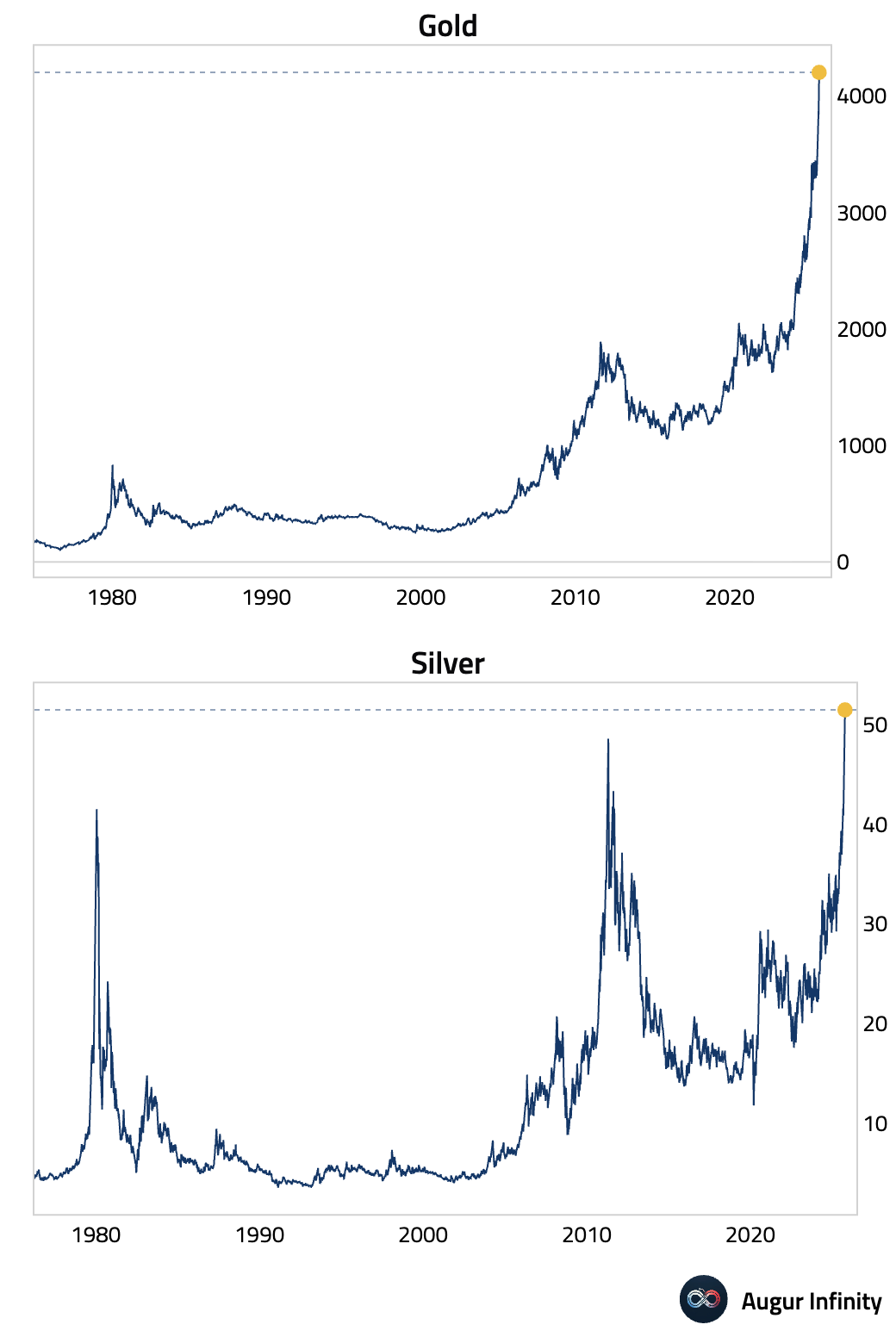
- Palladium had the best 5-day return since October 2024.
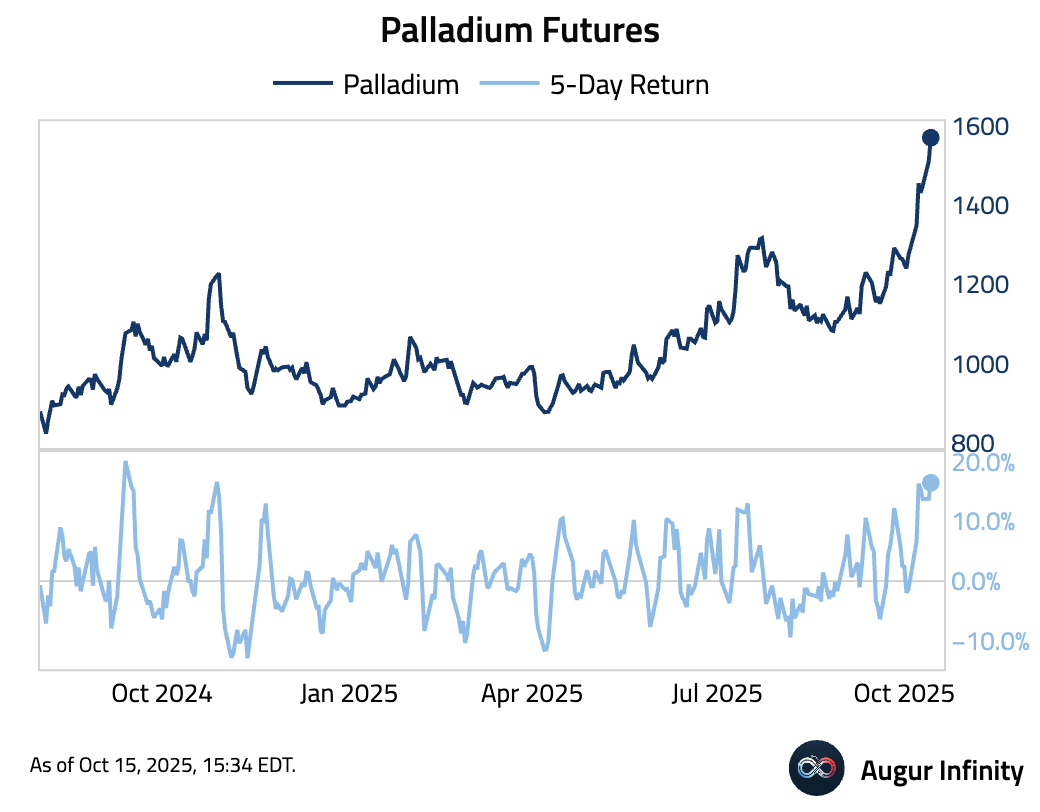
- Orange juice futures fell to their lowest level since November 2022.
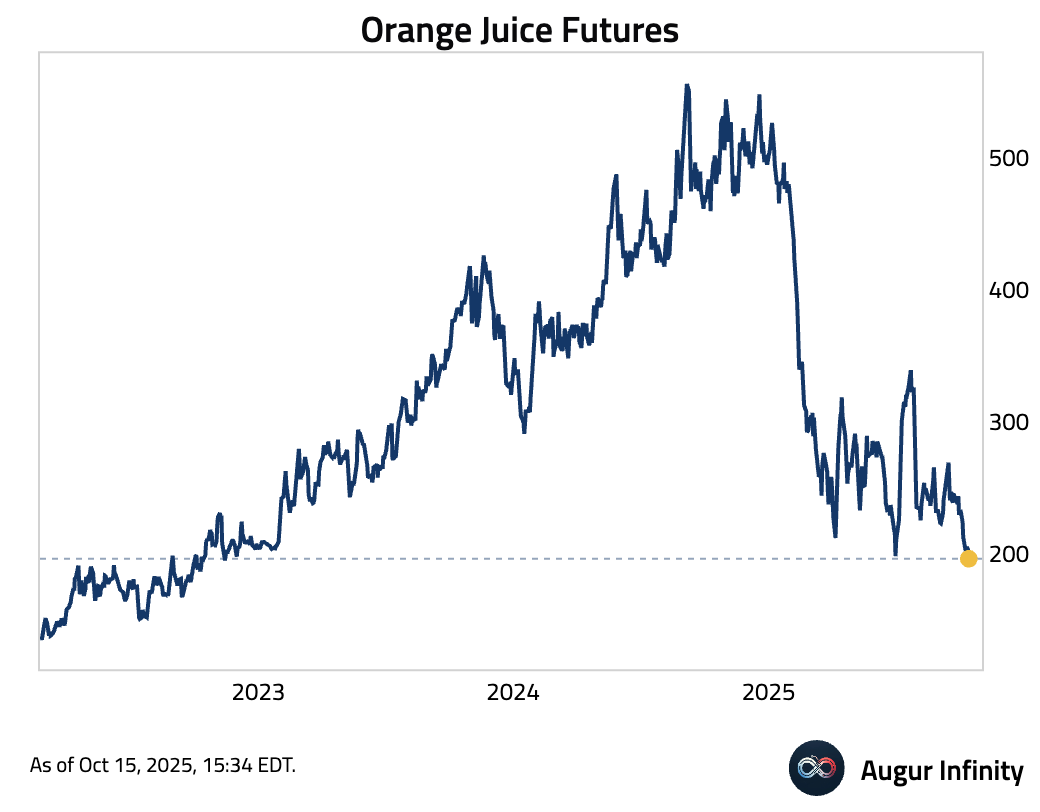
FX
- The US dollar weakened against most of its G10 peers. The Japanese yen appreciated for a fourth consecutive session, gaining 0.3%. The Norwegian krone, Swedish krona, and British pound were also among the top performers. Conversely, the Canadian dollar was the sole laggard, declining 0.1% for its third straight day of losses against the greenback.
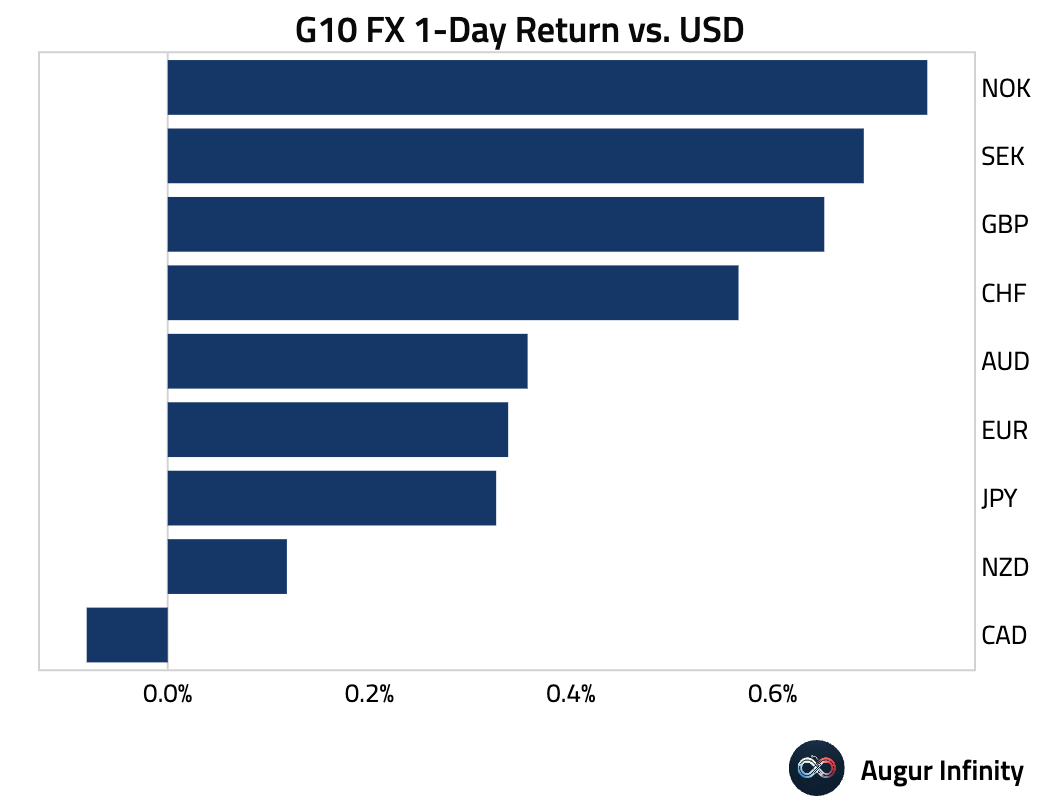
- The Indian rupee rallied strongly on Wednesday, surging nearly 1% after the RBI went on the offensive, likely having sold dollars in both the offshore and onshore markets.
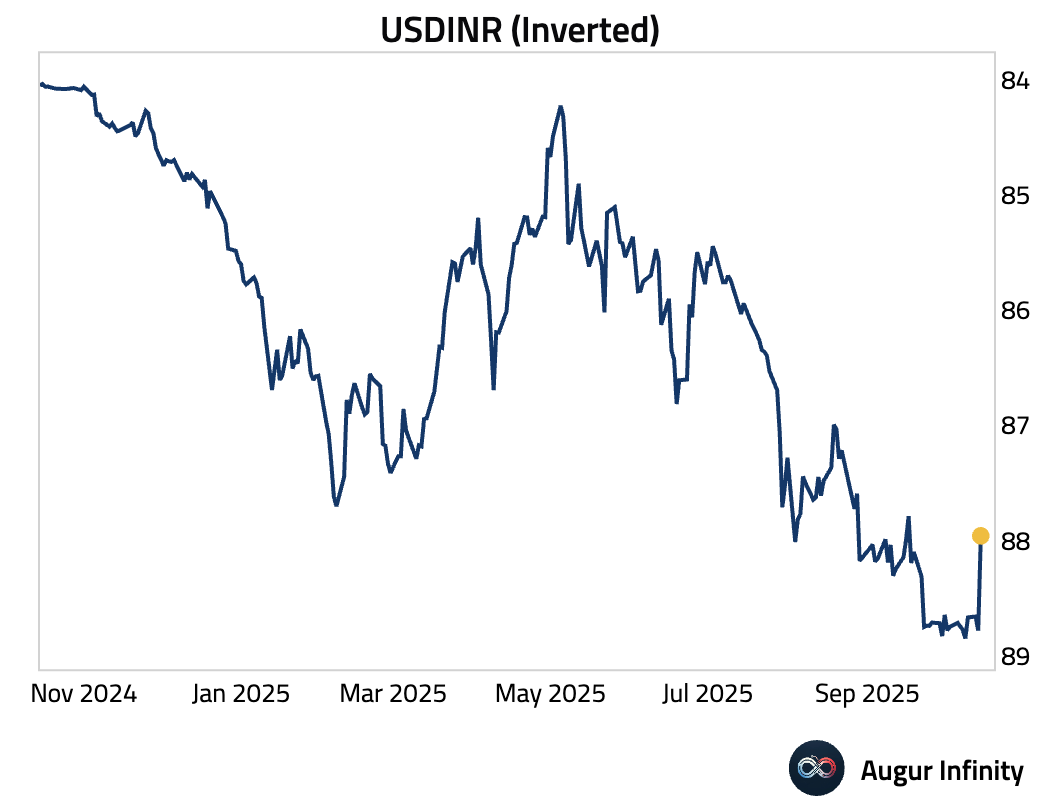
Source: Bloomberg
Musings
- The US has about 2000 more data centers than the next 10 largest countries combined.
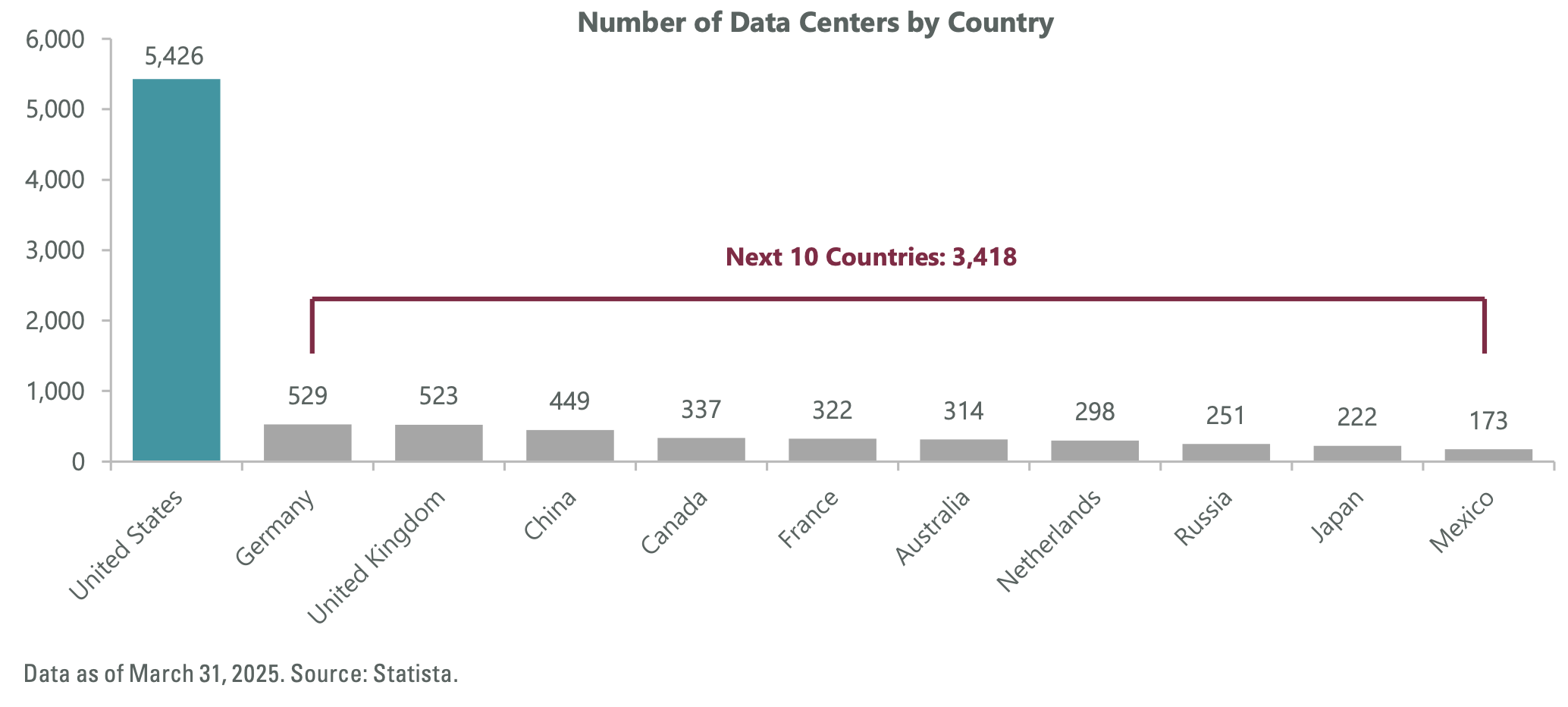
Source: ClearBridge
- Here's homeownership by decade of birth and current age.
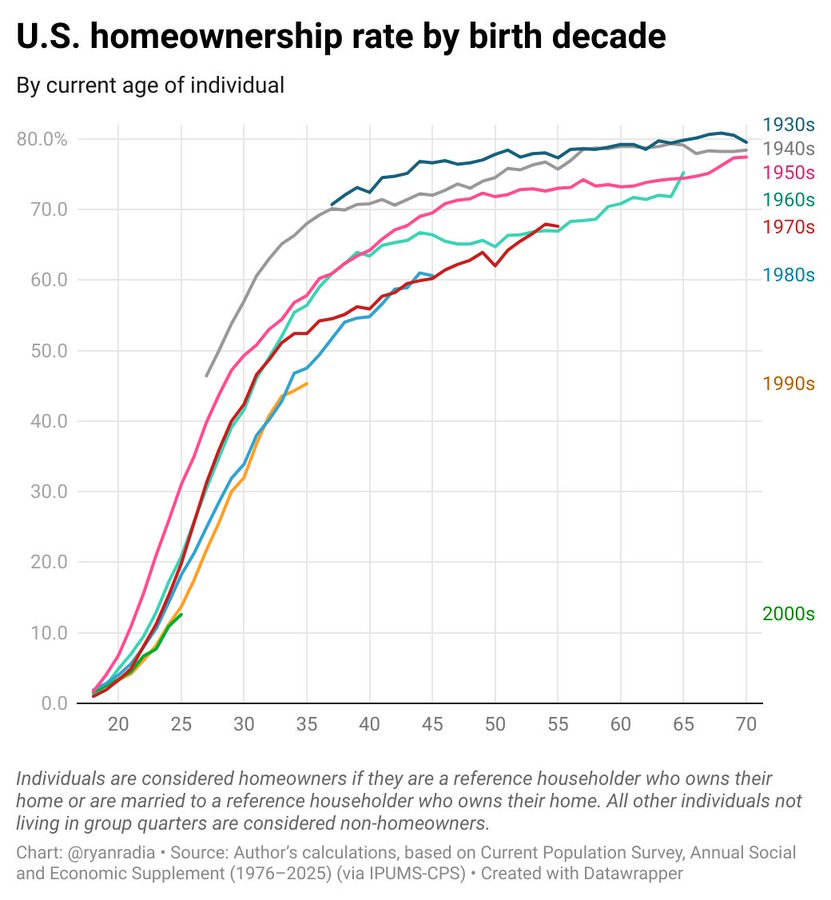
Source: @RyanRadia
- Tech startups are raising more money per employee.
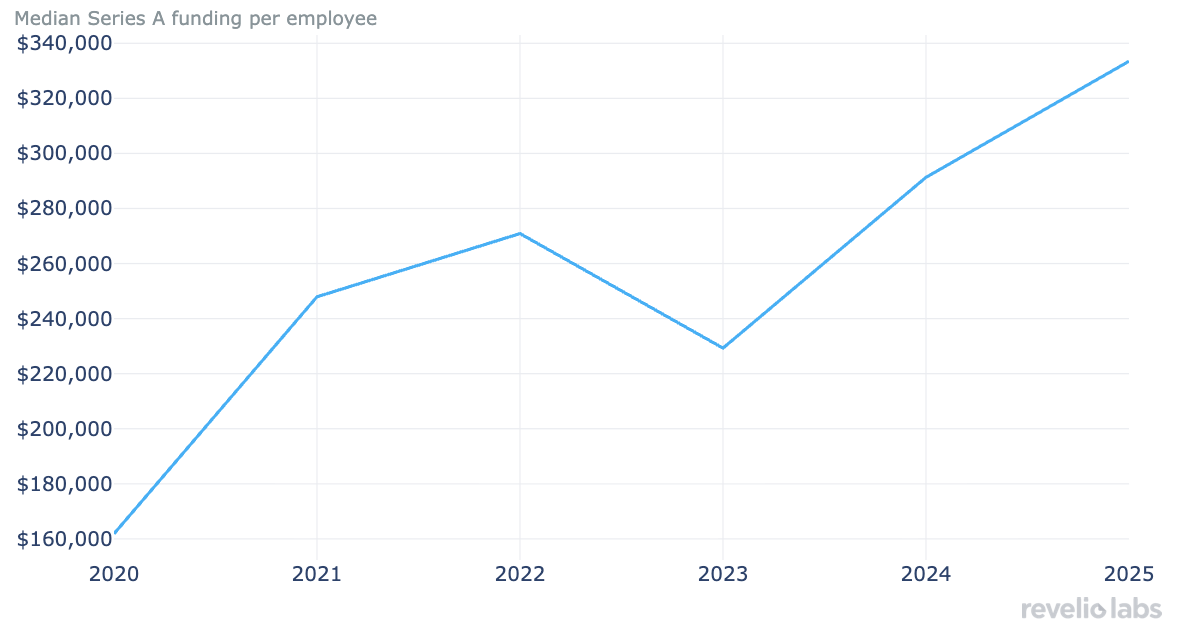
Source: revelio labs
Disclaimer
Augur Digest is an automatically generated newsletter edited by humans. It may contain inaccuracies and is not investment advice. Augur Labs LLC will not accept liability for any loss or damage as a result of your reliance on the information contained in the newsletter.
Reply